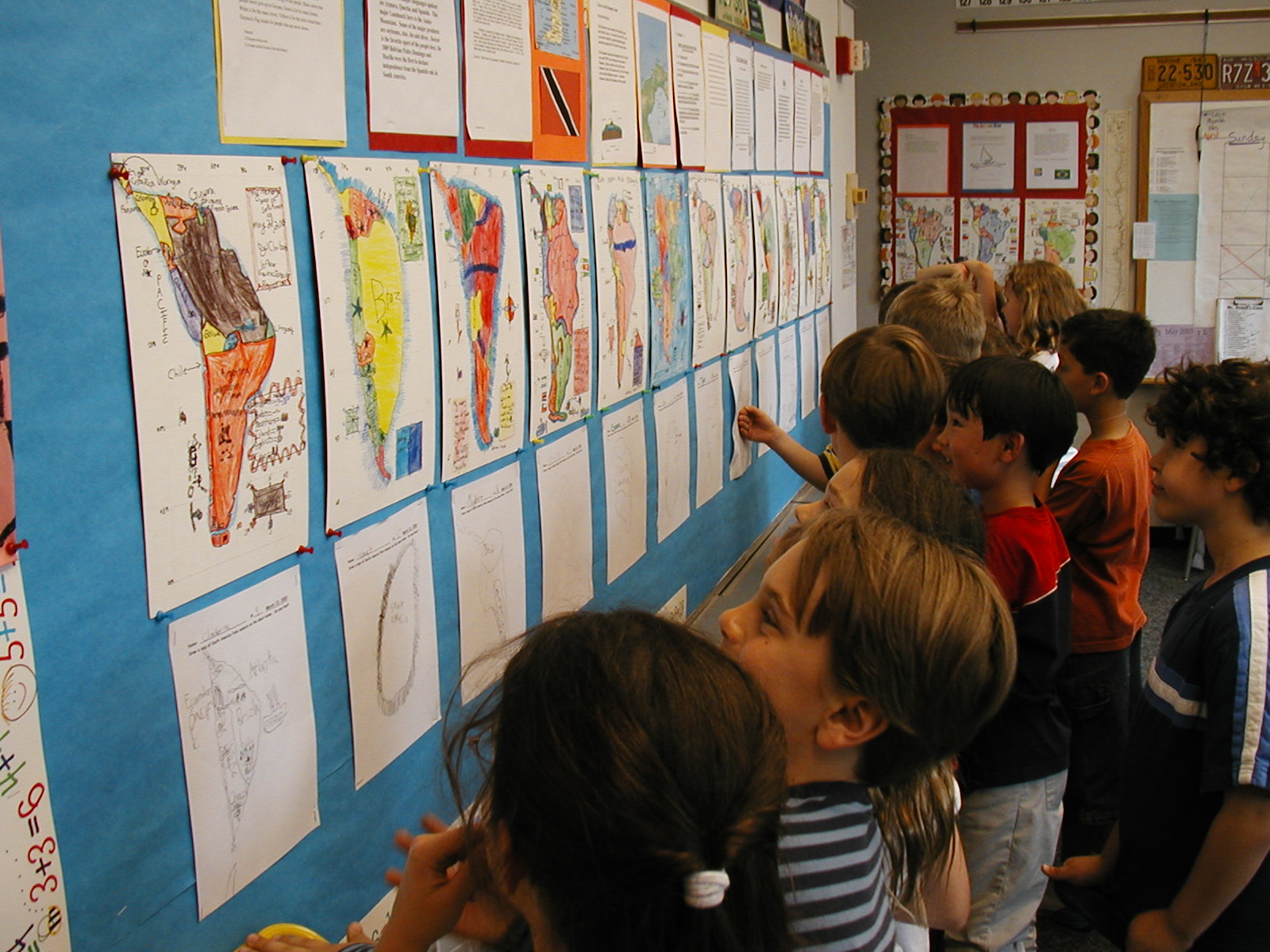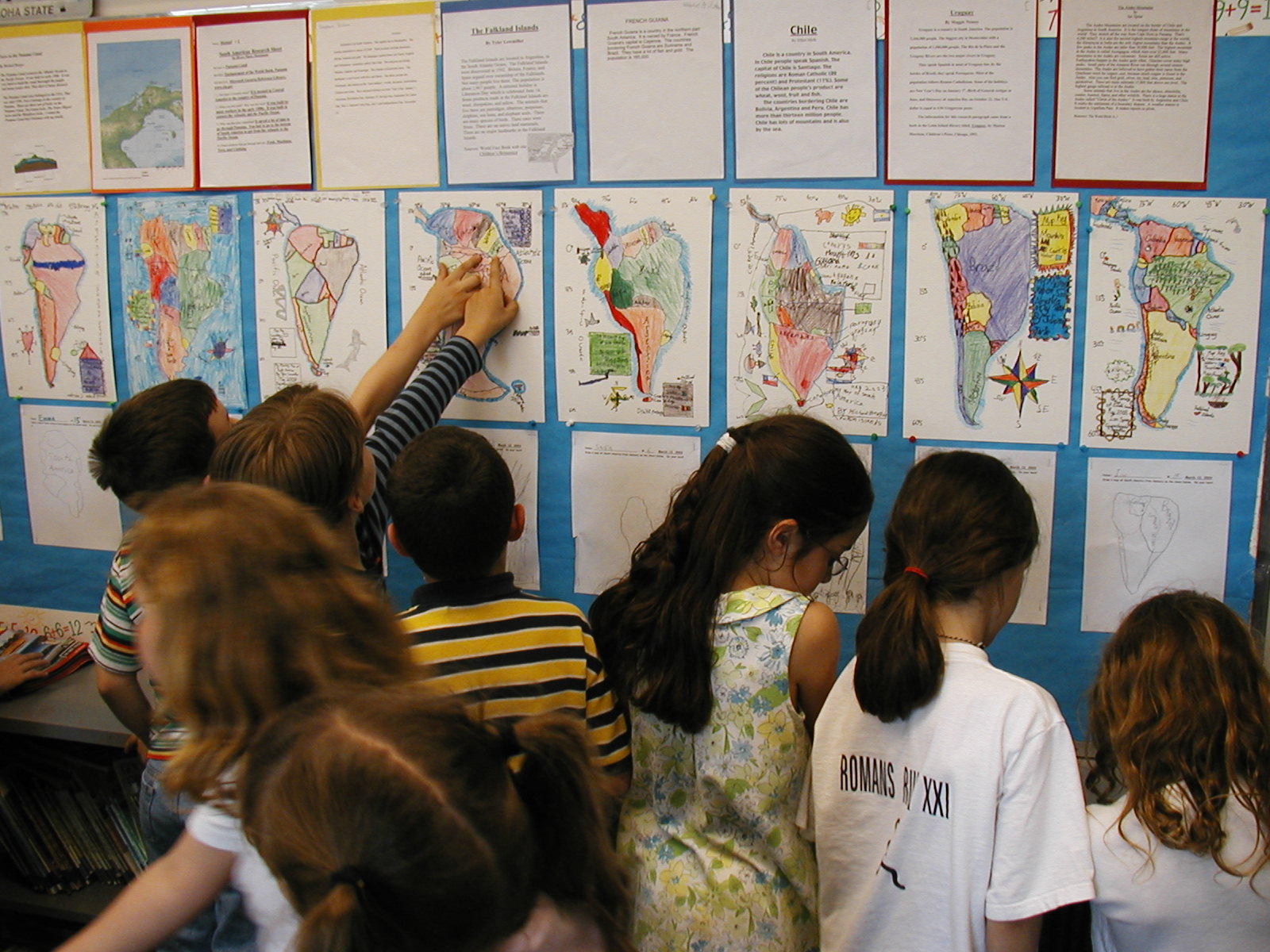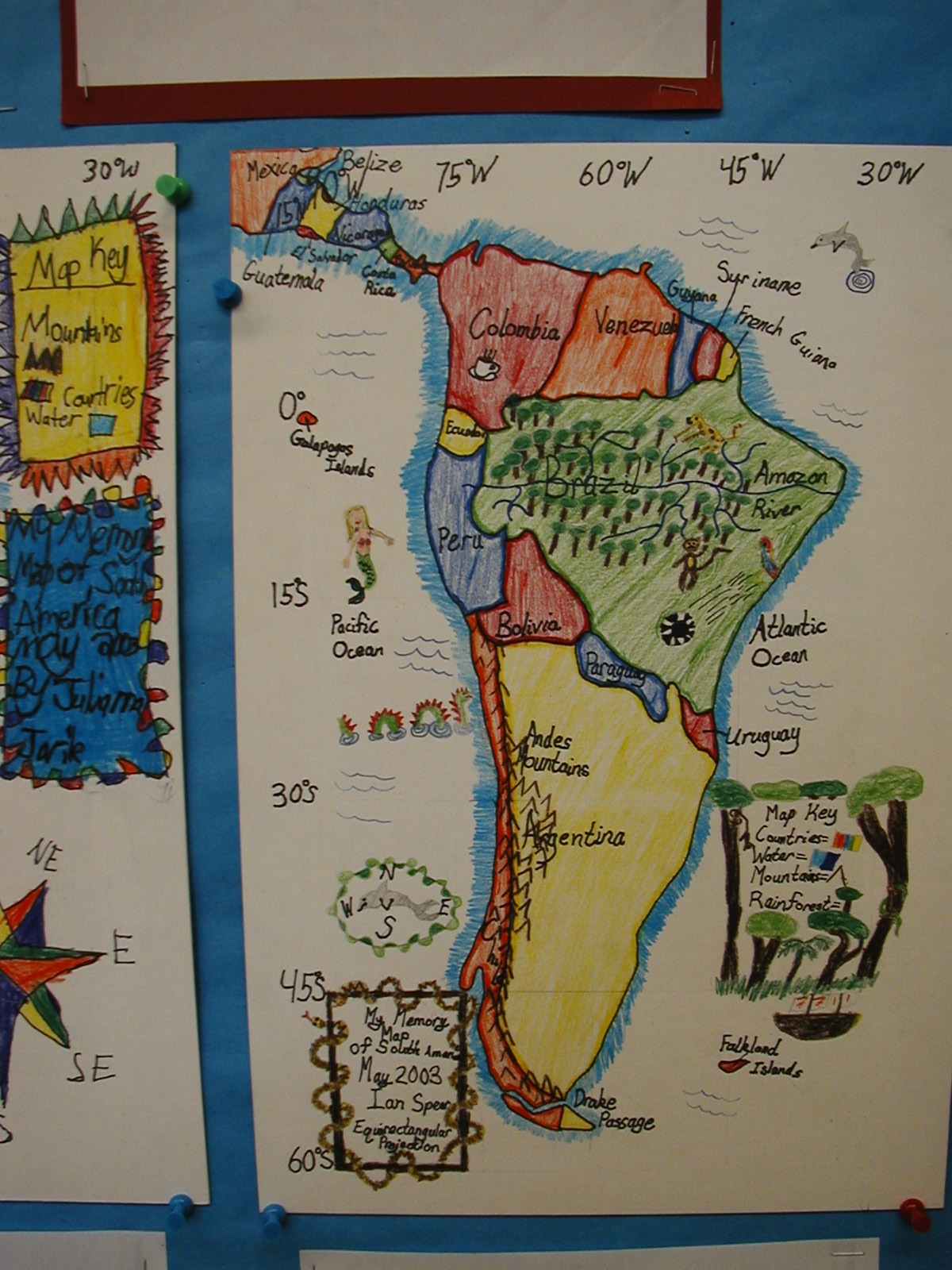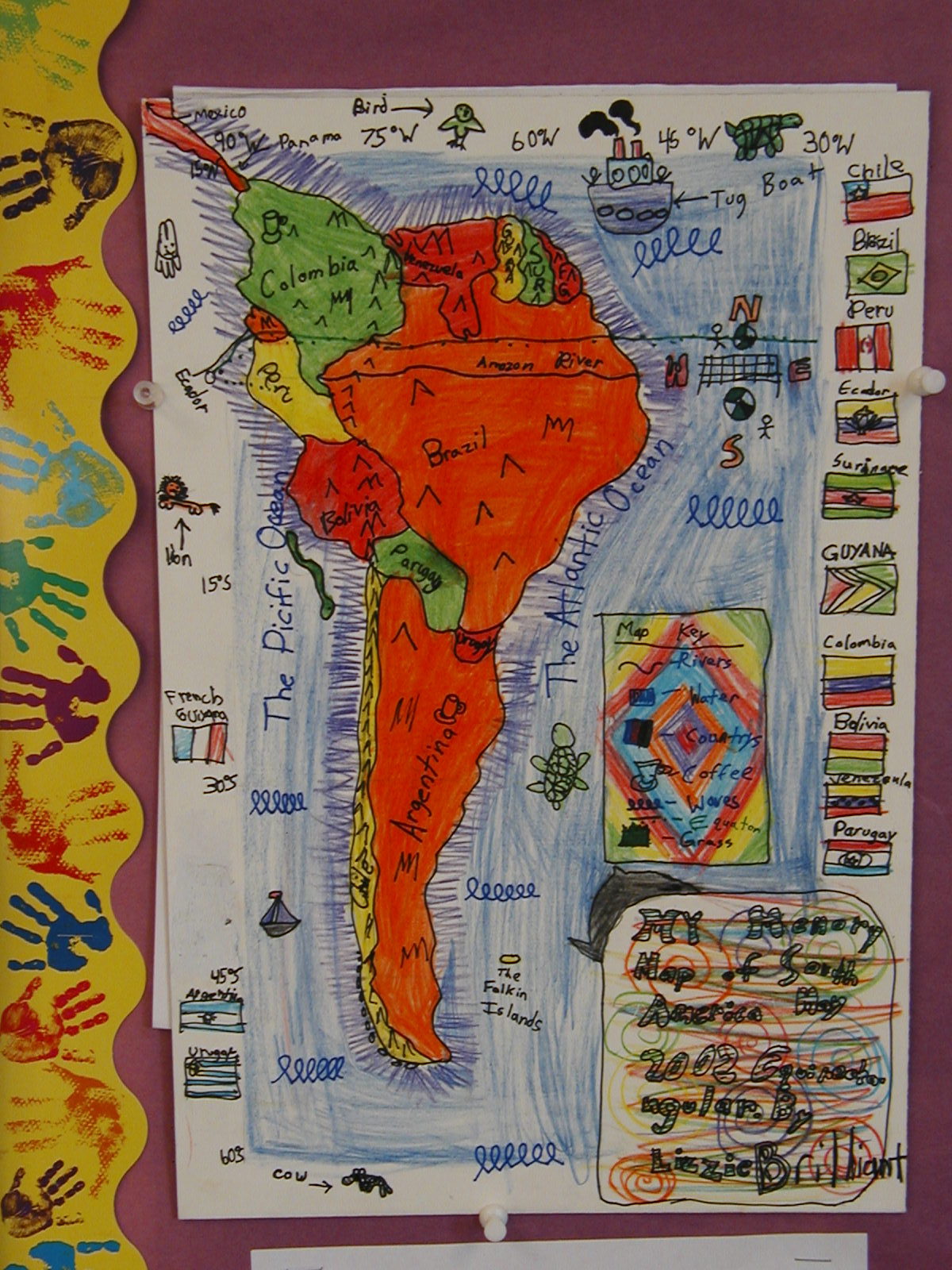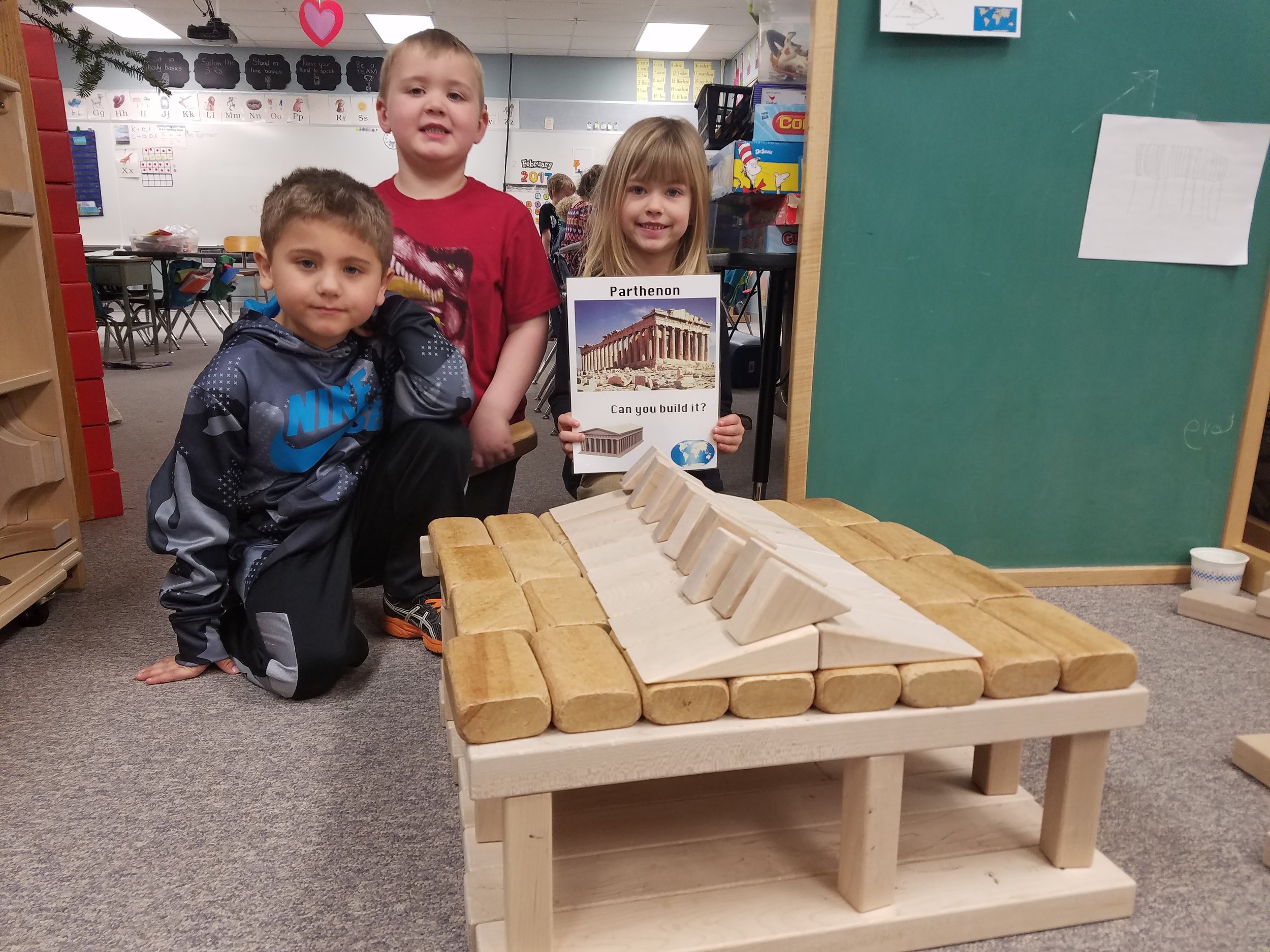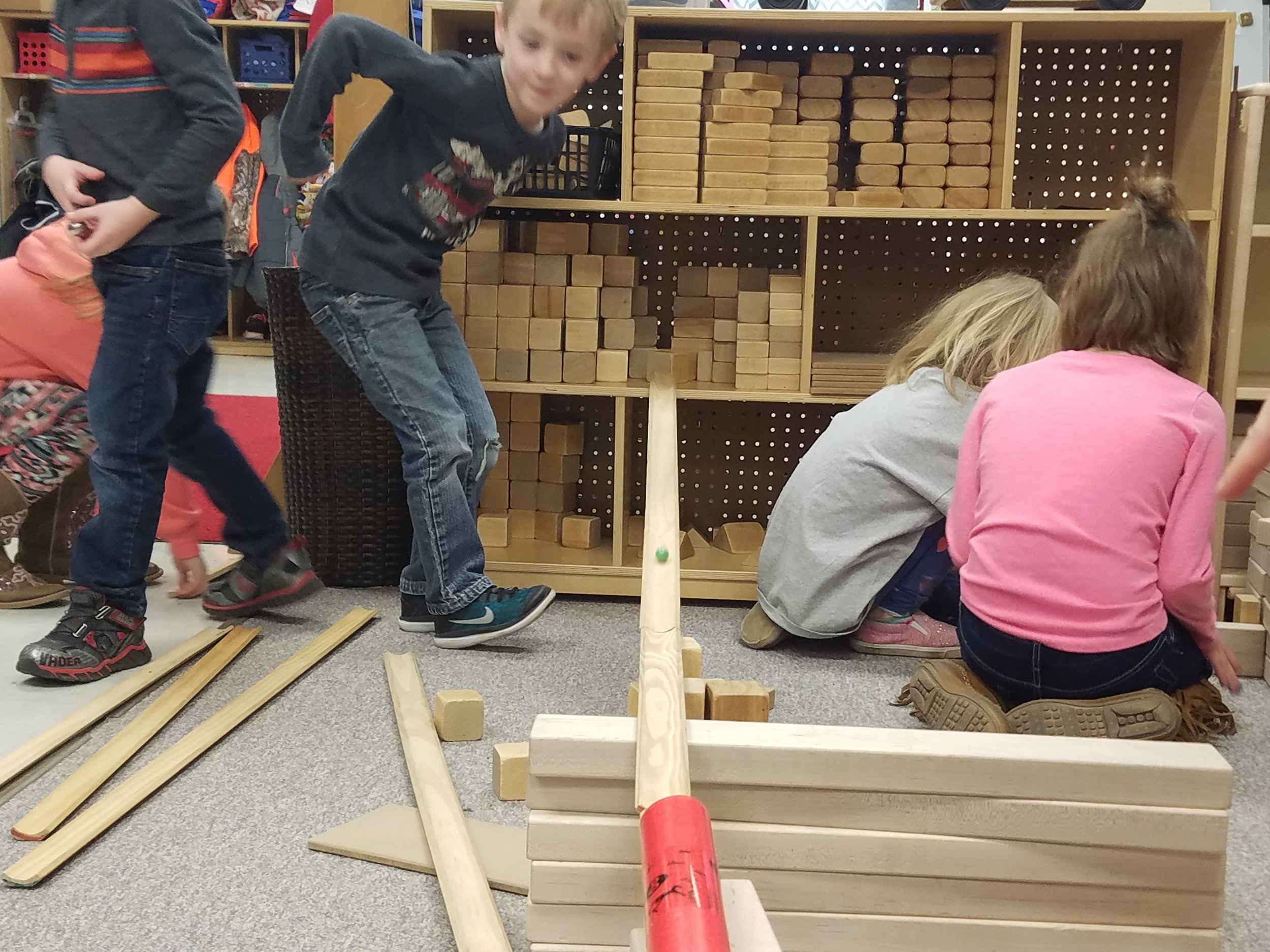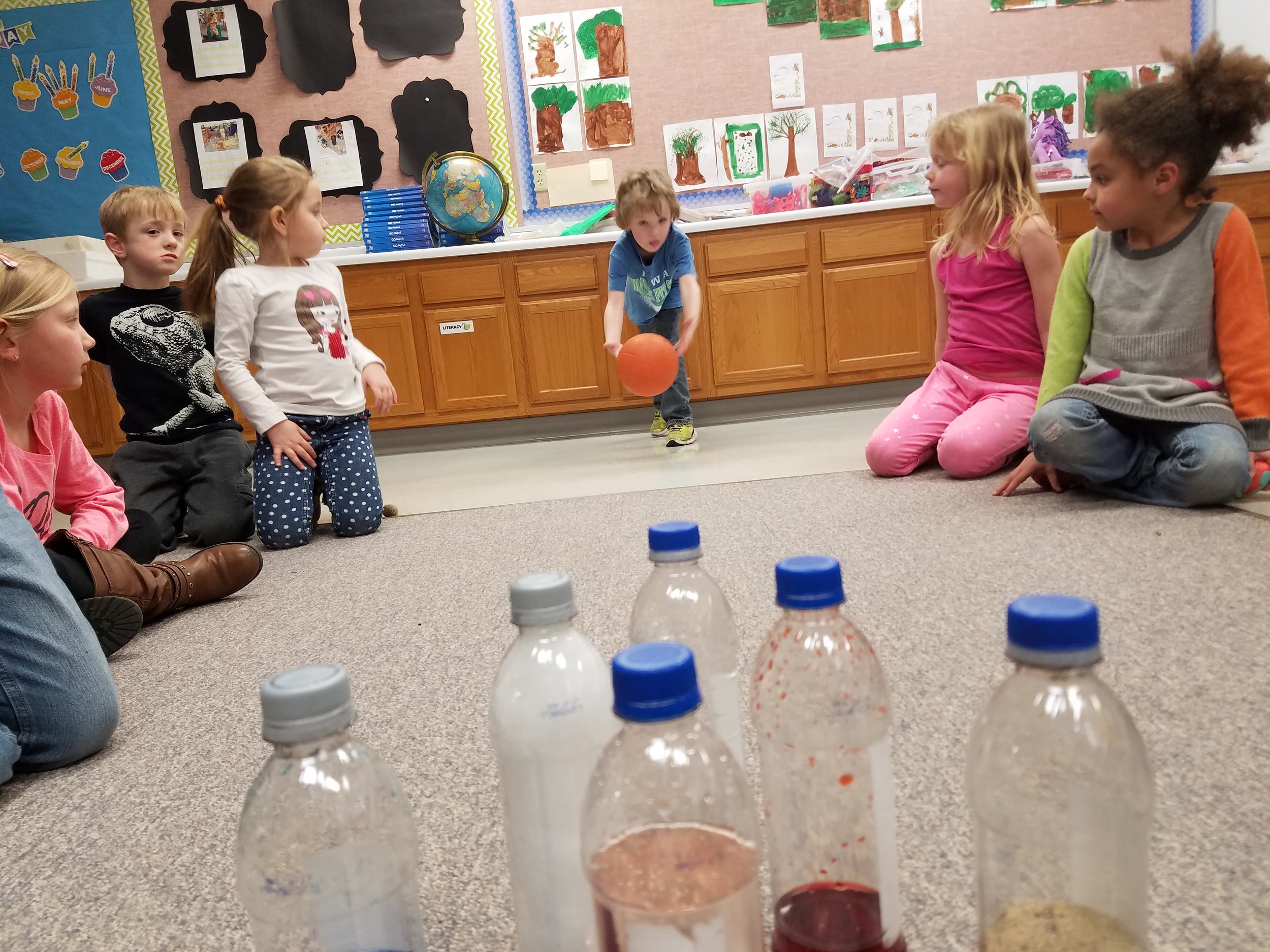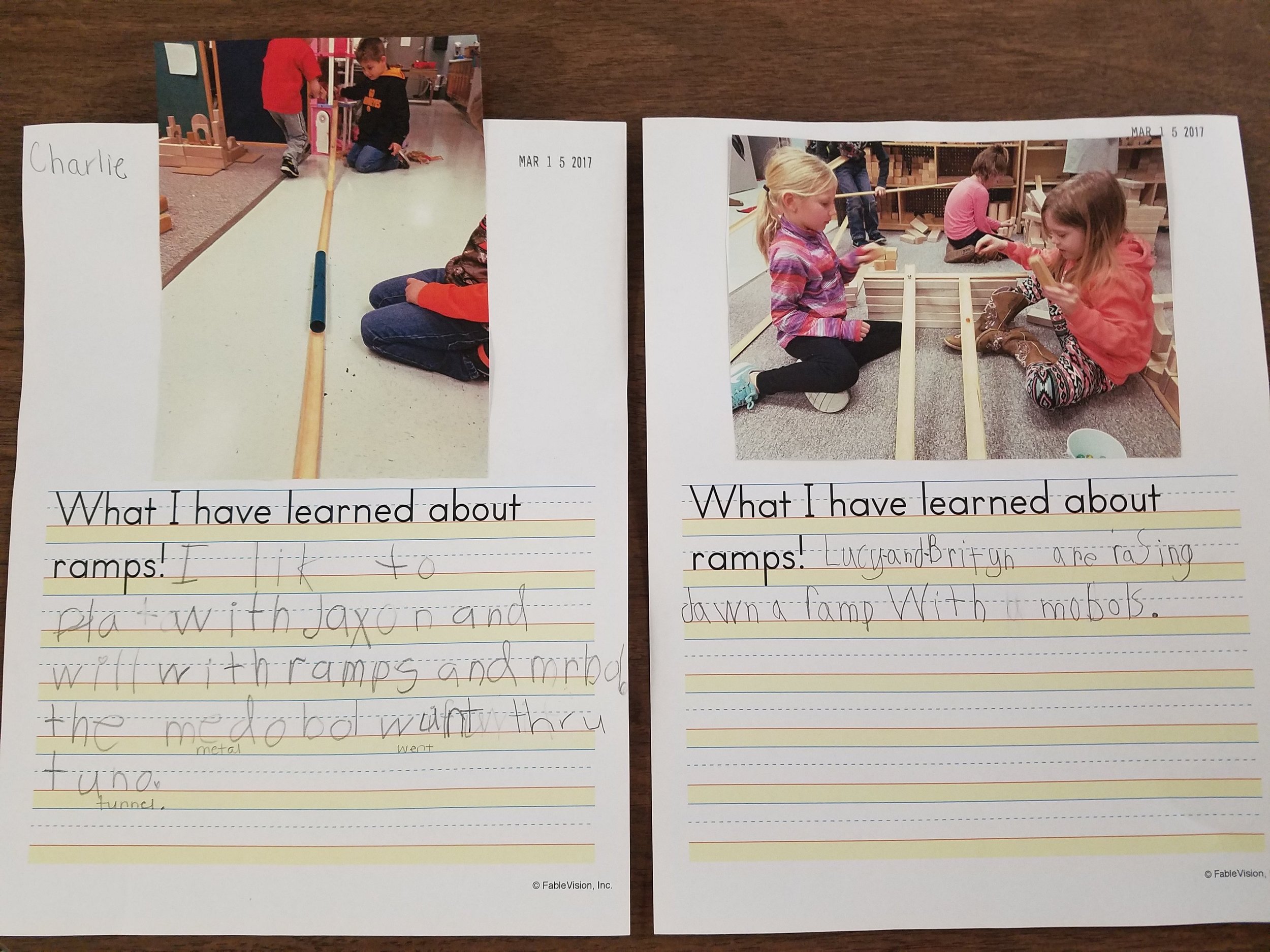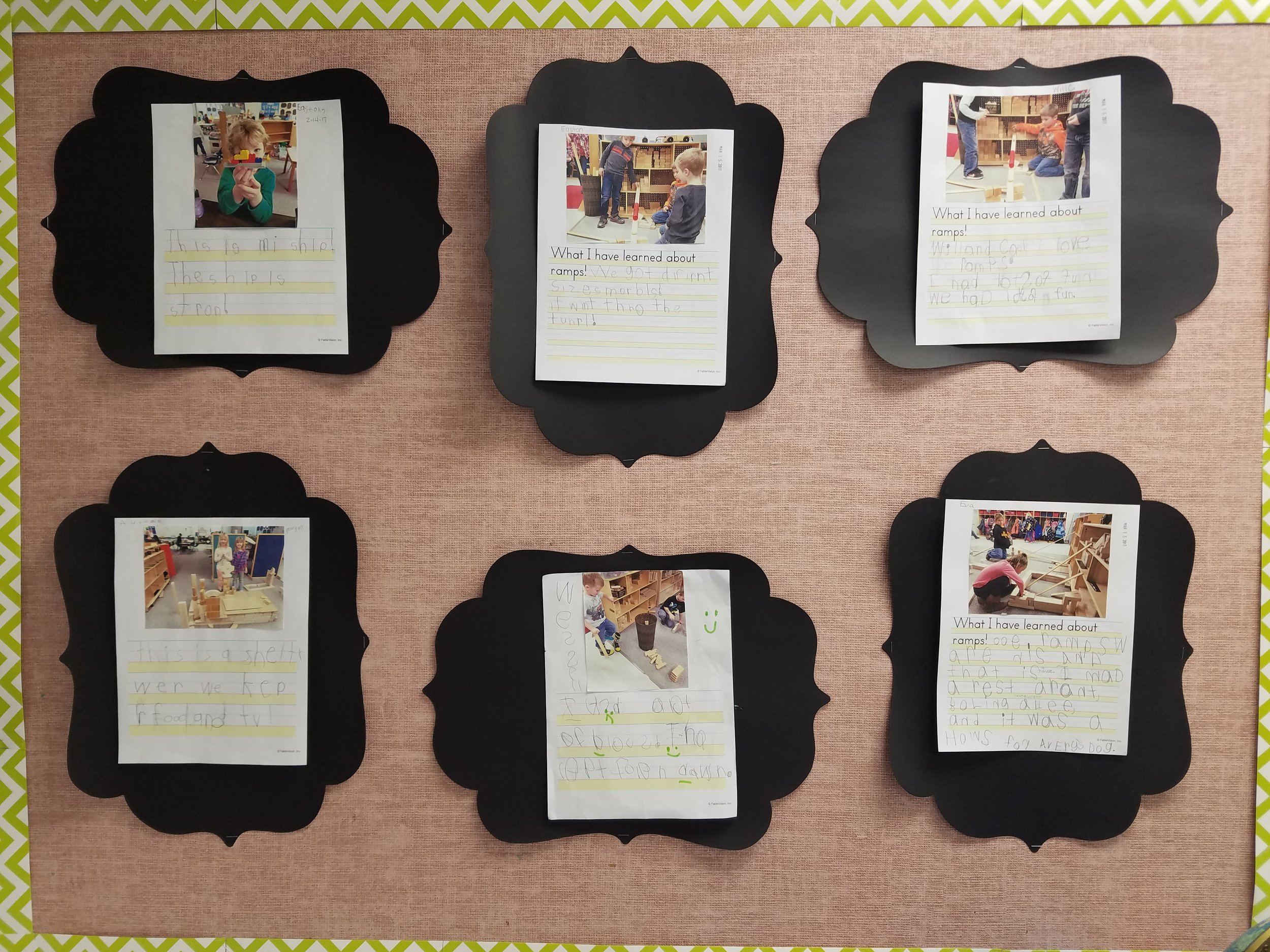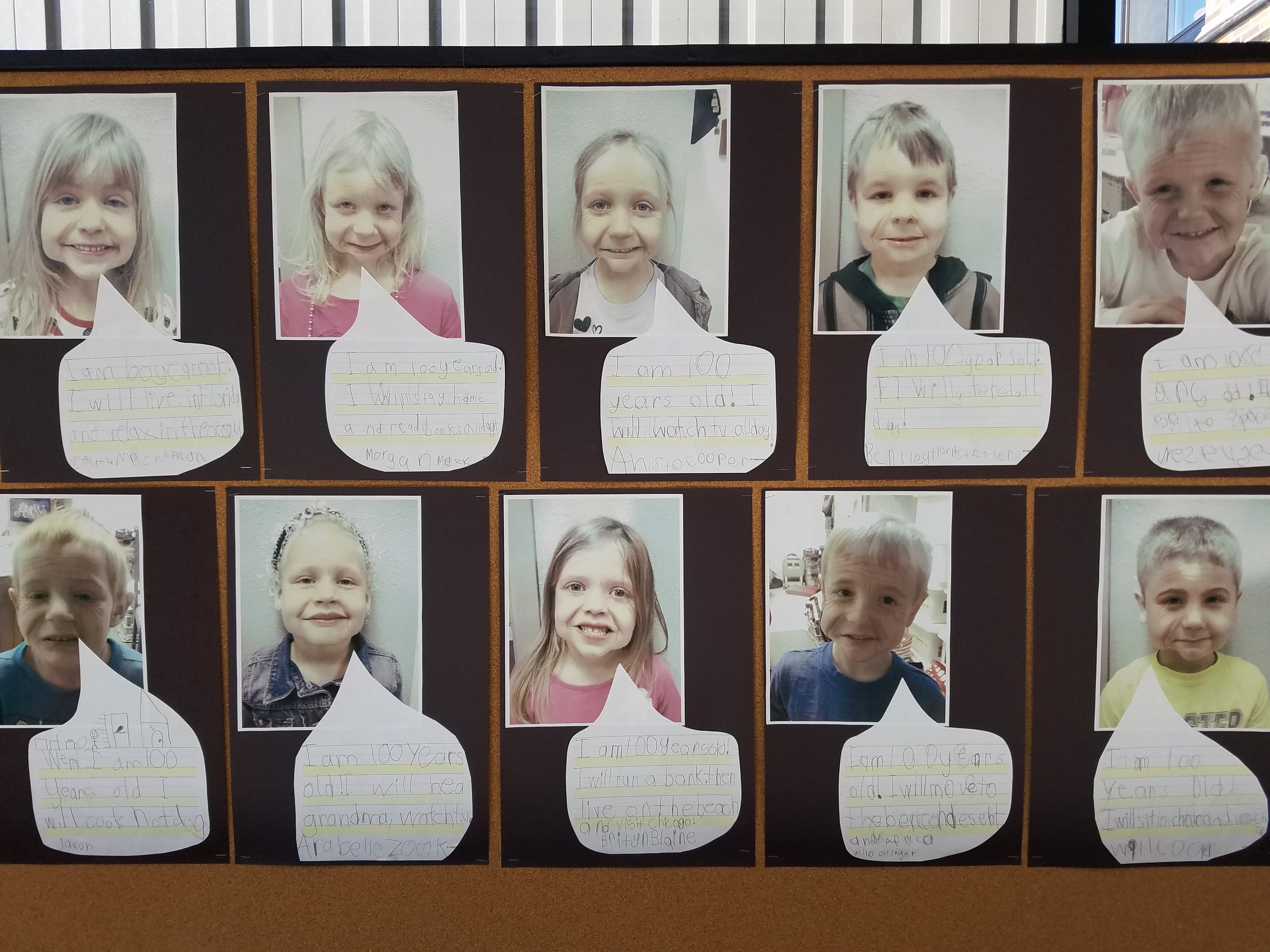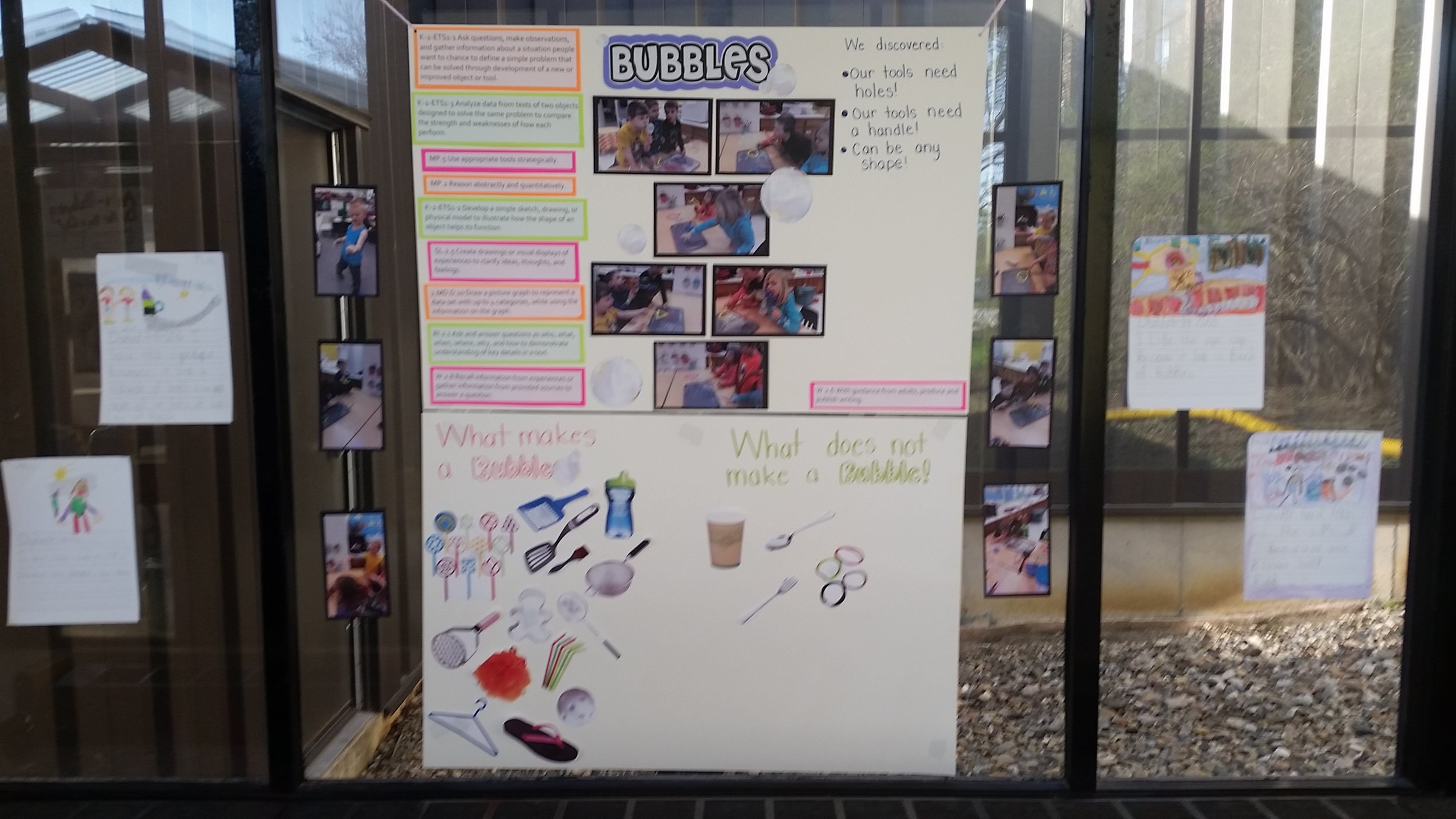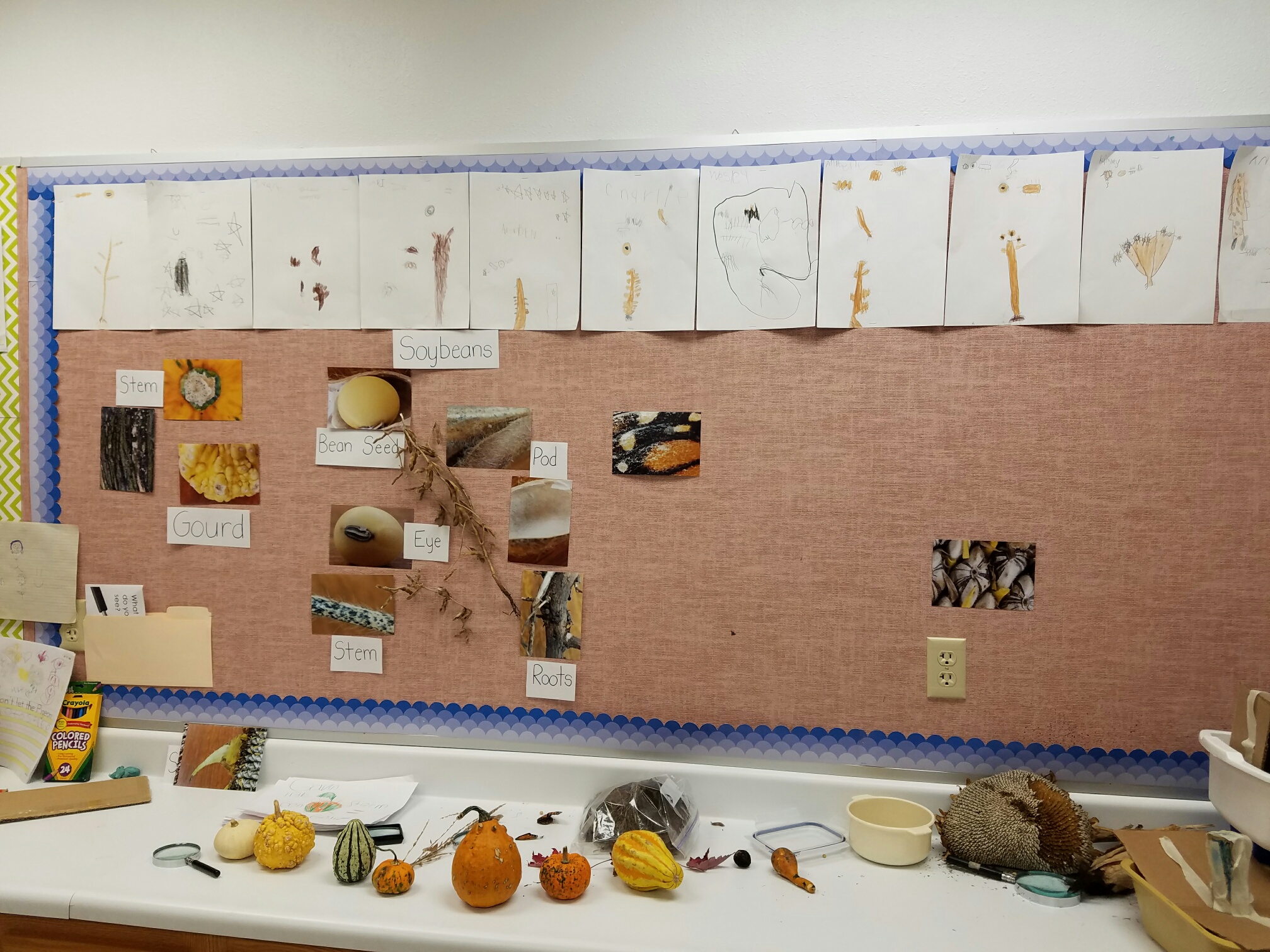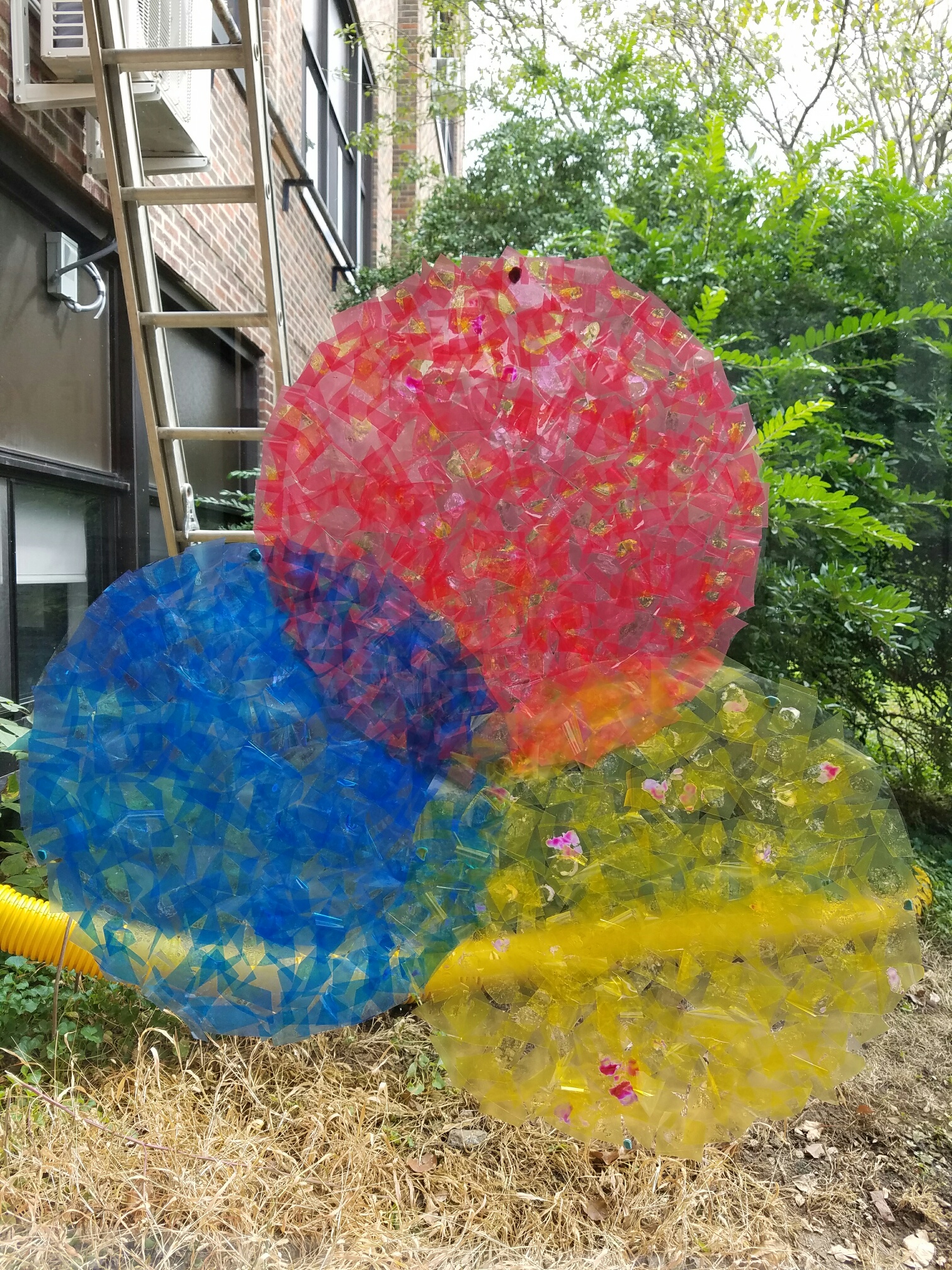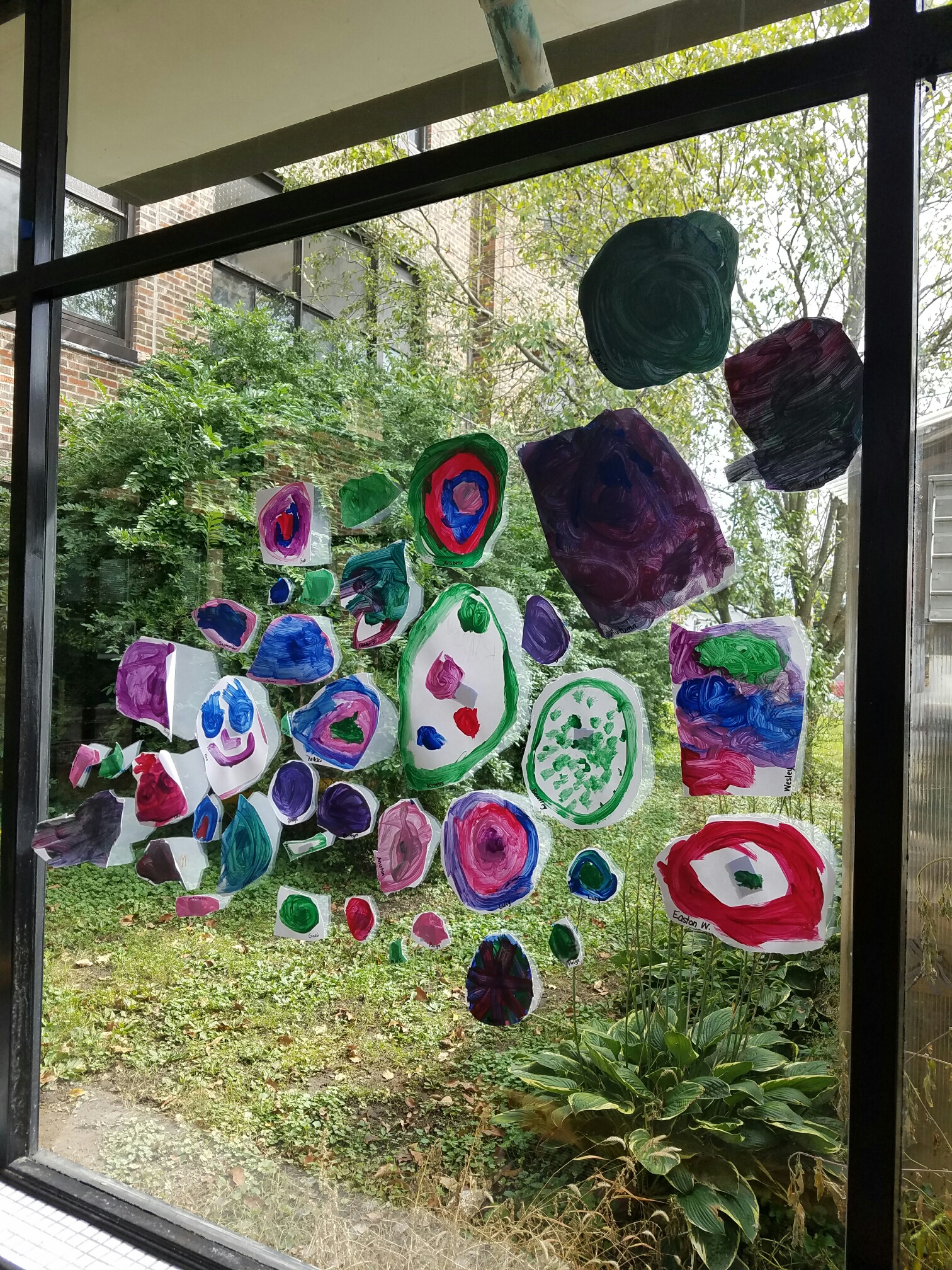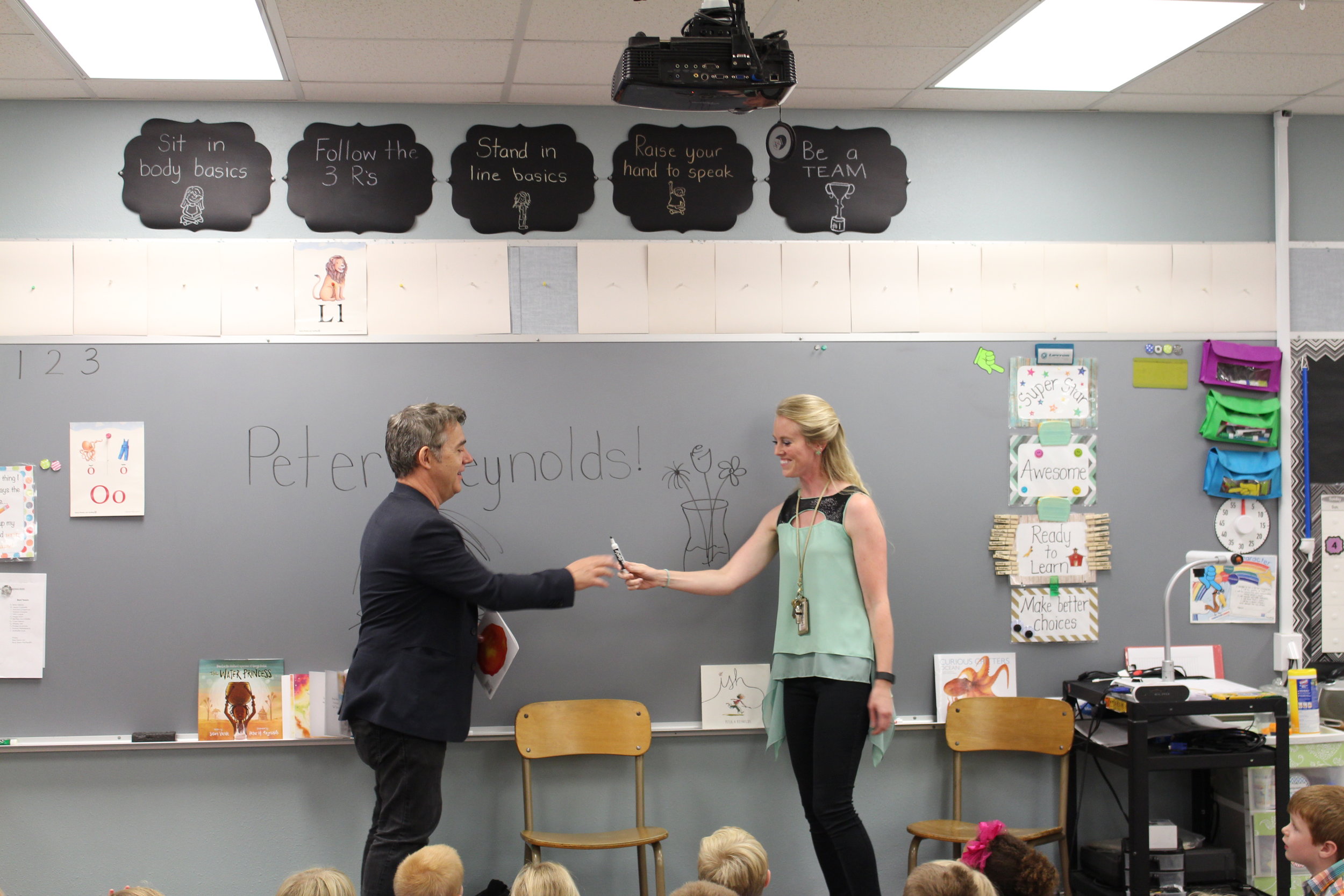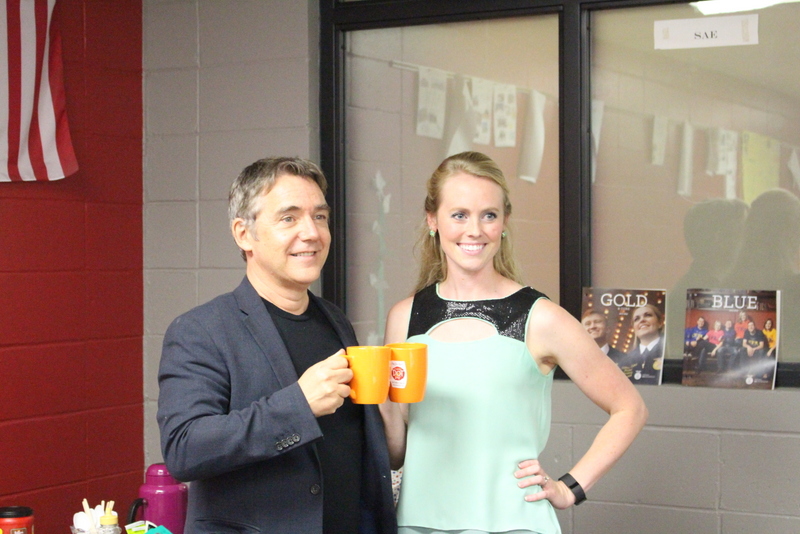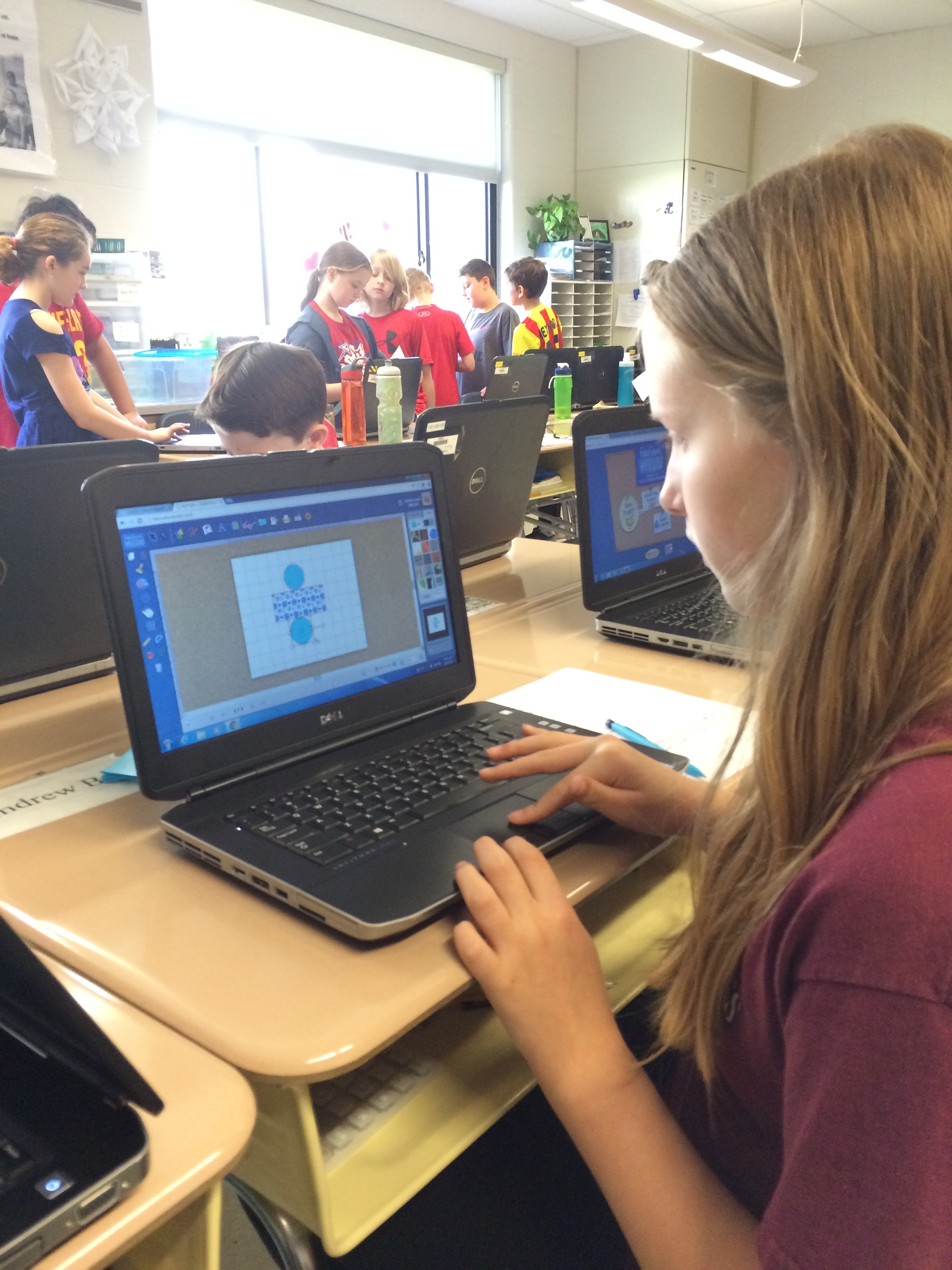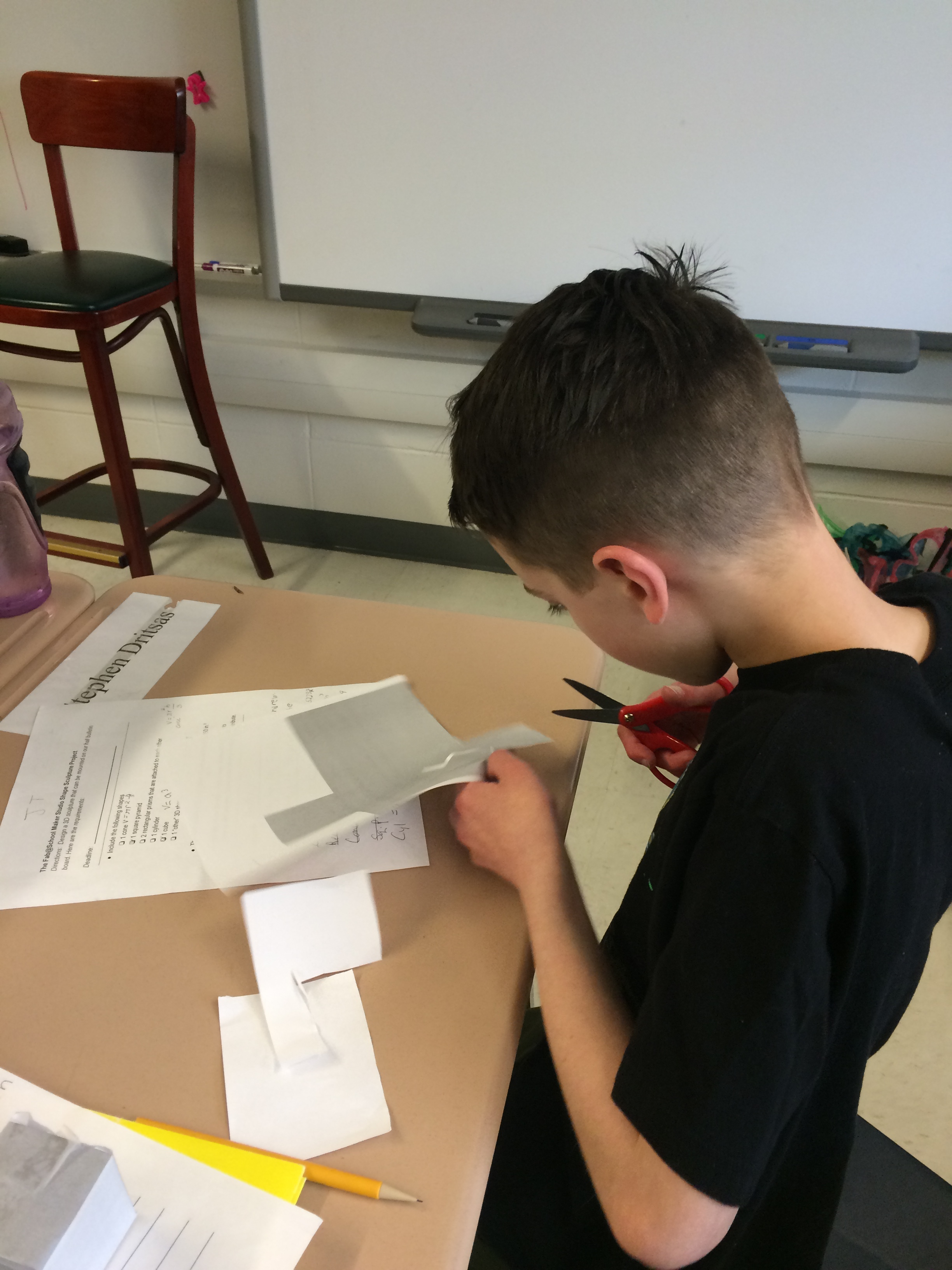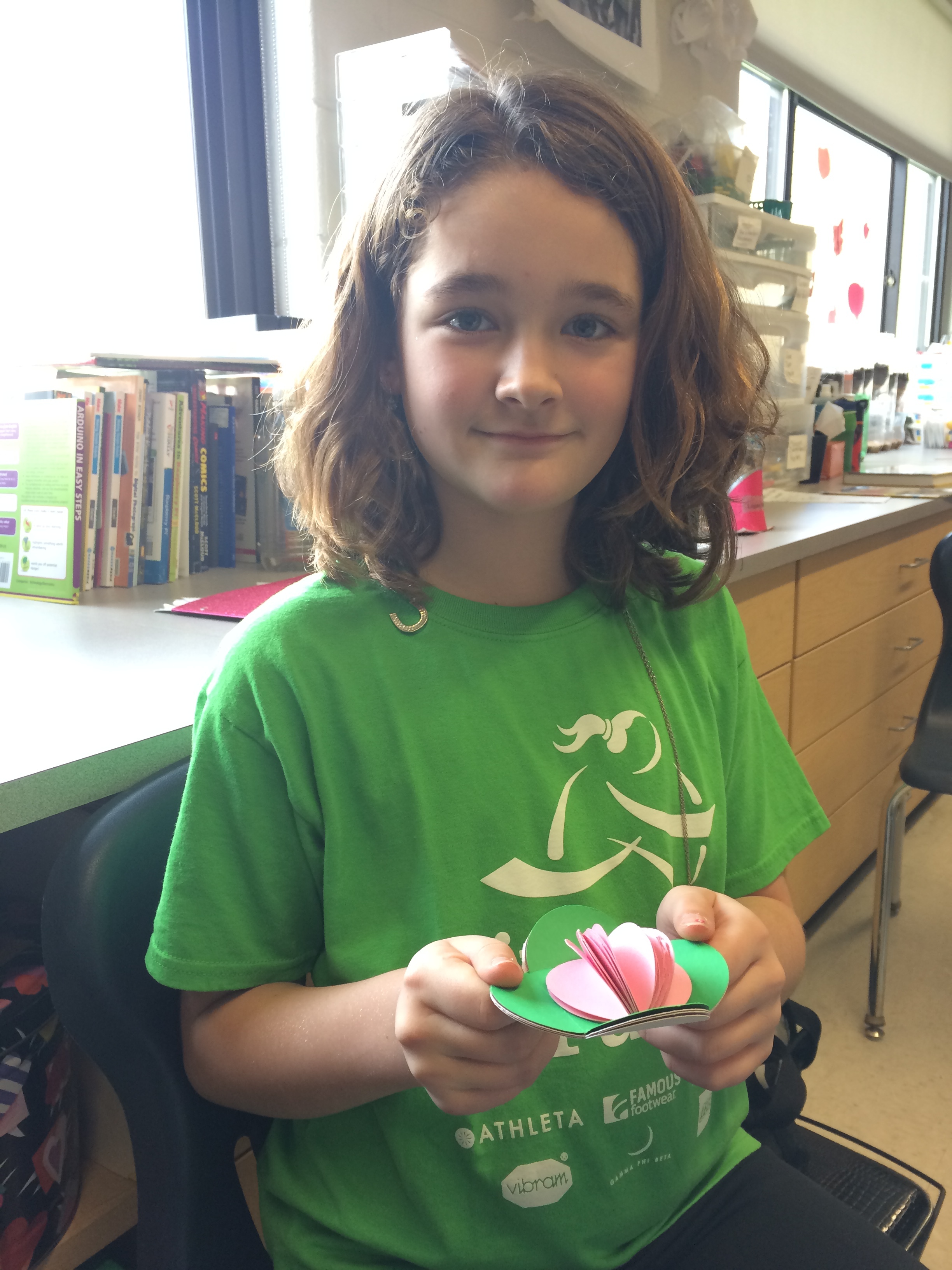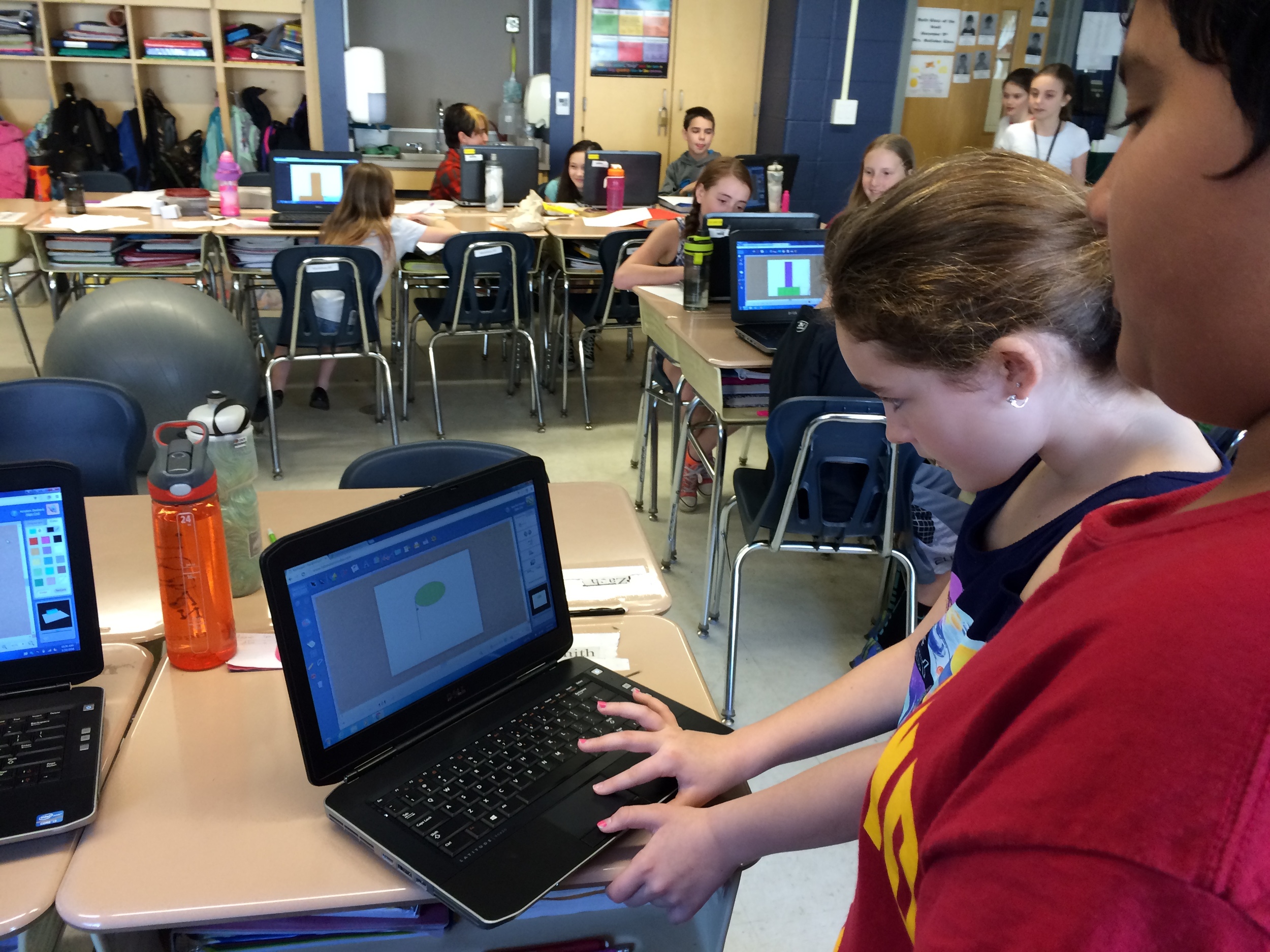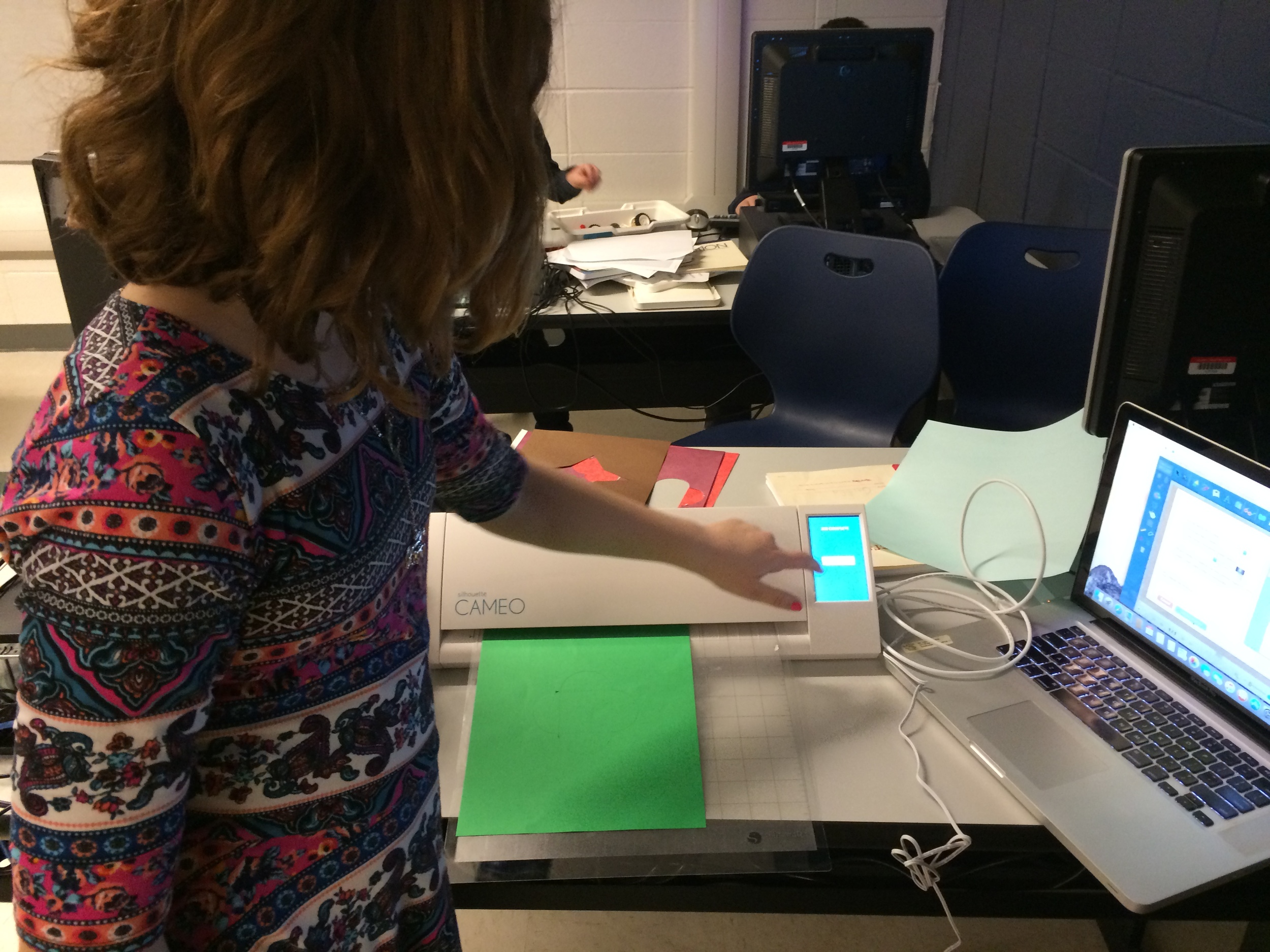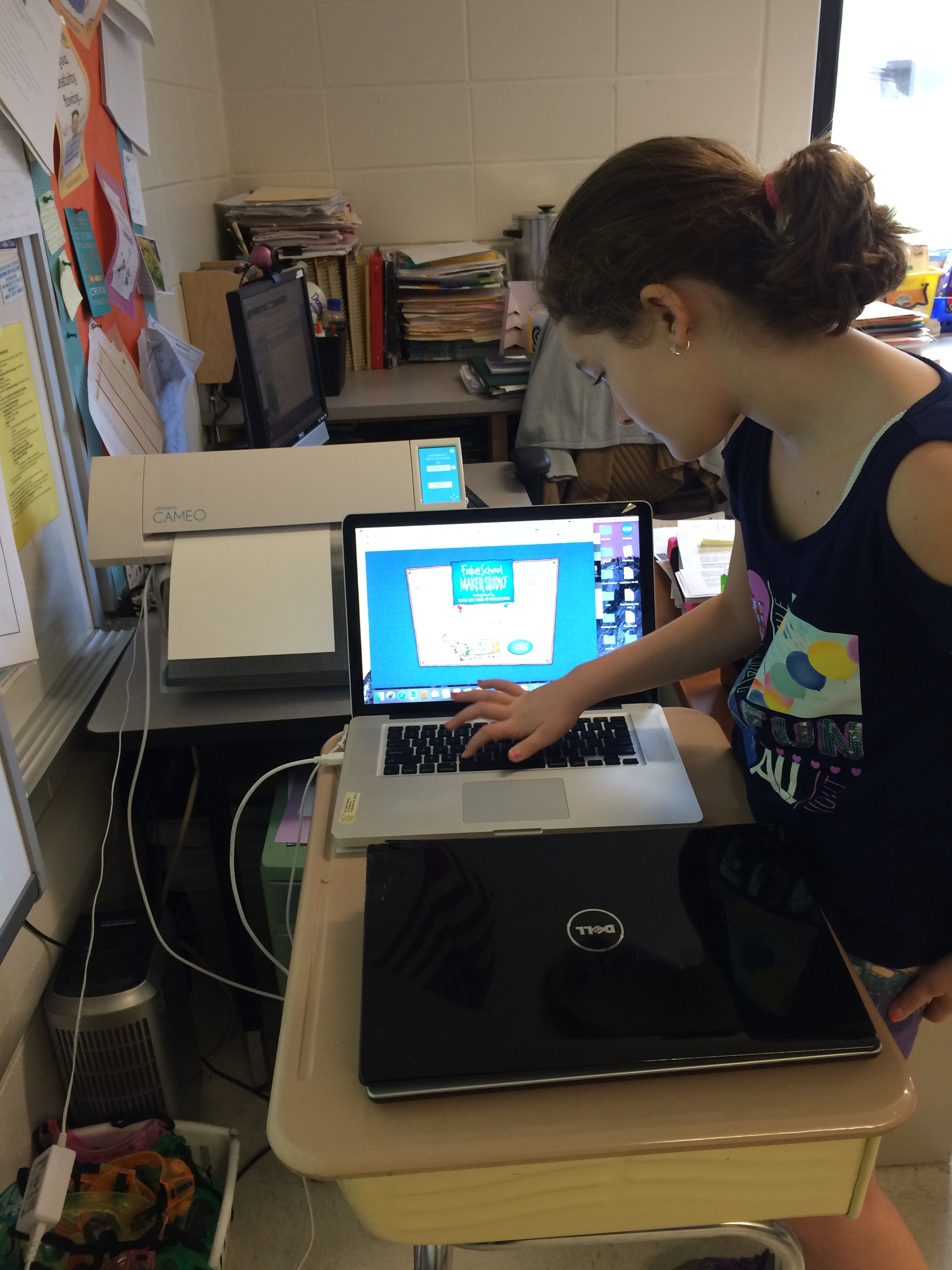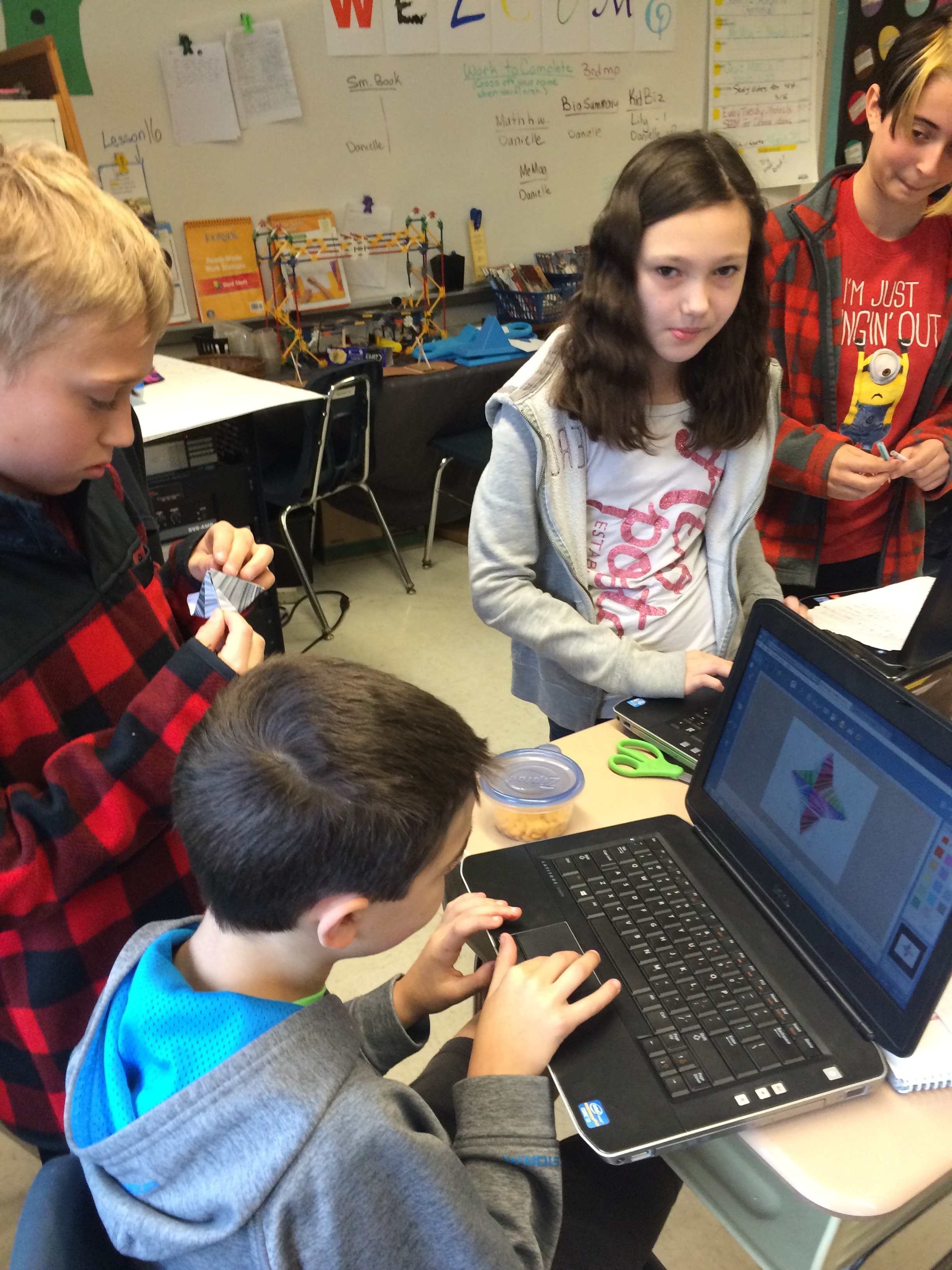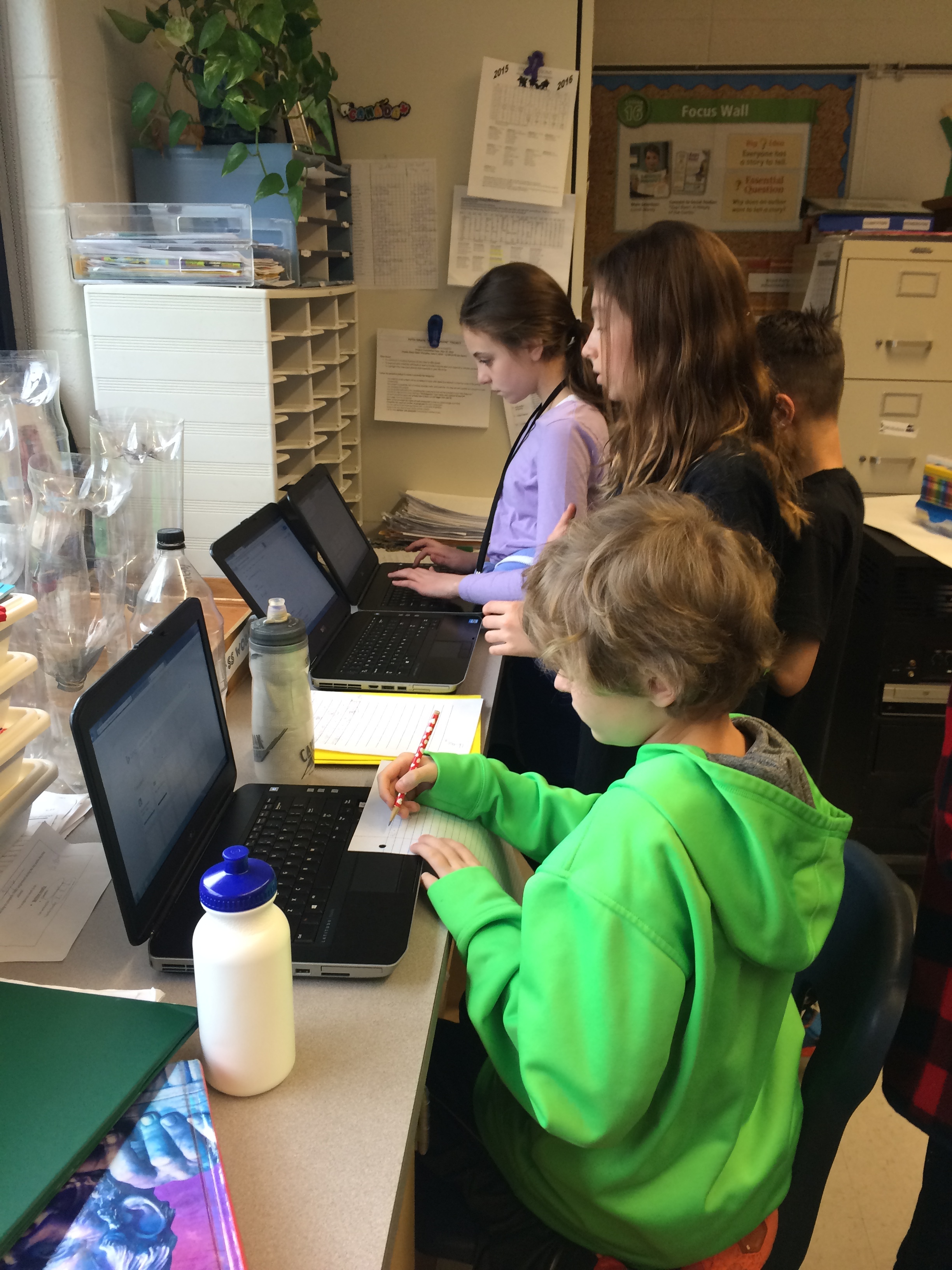FableVision Learning Spotlight Blog
Categories
- Animation-ish 42
- Books 21
- Civics! 2
- Classroom Spotlight 17
- Conferences and Events 20
- Creative Educator 3
- Creativity 25
- Distance Learning 13
- Dot Day 22
- FabClassroom 28
- FabFriday 19
- FabMaker Studio 66
- FabMaker Studio Classroom 13
- FableFive 7
- FableVision Games 3
- Free Educator Resources 36
- HUTCH 1
- Home Activities 5
- In the Classroom 34
- In the News 11
- International Dot Day 23
- Ish 1
- Library 1
- Mapping the World by Heart 7
- Paul Reynolds 10
- Peter H. Reynolds 54
- Professional Development 9
- STEM/STEAM 20
- Storybook Academy 2
- Teacher Spotlight 14
- The Dot 17
- The North Star 2
- Words and Their Stories 1
- Zoombinis 3
Oak Lawn Middle Schoolers Create Digital Picture Books to Share Messages of Peter H. Reynolds
The following blog post was written by Tyler Stott, an intern at FableVision Learning.
Students from Oak Lawn Middle School create a painting activity for the book Sky Color.
At Oak Lawn-Hometown Middle School in Oak Lawn, Illinois community service is at the center of everything they do.
Heather McCarthy, a media specialist at the school works with over 1,100 middle school students and shares, “My library centers around empathy, inclusion, and service learning…Throughout the years, they have raised over $50,000 for clean water projects in Africa, have packaged over 250,000 meals for families in need, and host an annual walkathon to raise money for pediatric cancer patients. We even host a ‘Day of Service’ where the entire school spends the whole day completing community service projects. “
This passion for helping others didn’t slow down during the pandemic. McCarthy and her students kicked into high gear. As recipients of a Hershey's Heartwarming Action Grant, McCarthy and her students got to work creating interactive story books using the stories and messages of their favorite author Peter H. Reynolds. These books were then donated for children at Child Life at Hope Children’s Hospital.
“Peter H. Reynolds is one of our favorite authors since his books and illustrations encompass the themes of resilience, bravery, confidence, patience, and individuality,” McCarthy shared. “These are all qualities our middle school students strive for. We use Peter H. Reynolds’s books for our SEL work, STEM projects, and to read for enjoyment. When we wanted to send picture books over to the children’s hospital, we knew Peter’s books would be the perfect fit.”
For this project, students selected books by Peter H. Reynolds, and filmed a reading of the book and a video of a project. By adding QR codes to each book, recipients could follow along from anywhere.
We recently connected with McCarthy and her students to learn more about the project and school. Read on to learn more.
Abby Murphy reads Our Table
Your students created interactive story books for children in the hospital, how did that journey begin?
McCarthy: “The idea for this project came about when we were remote learning. We had a classmate whose little sister was in need of a heart transplant. The class of students really bonded over this experience. They showed great empathy and love for their classmate and her sister. We decided that as soon as we were back at school in person, we would put together a project to support the local children’s hospital. When we saw the Hershey’s Heartwarming Grant, everything fell into place.”
What has the response been from these children and their families when they were given the books, videos, and podcasts?
Angel Swiatek and Sophia Falcon read The Dot
McCarthy: “We delivered the books to the staff of Child Life at Hope Children’s Hospital. Then they chose which patients would receive our books. They reported the patients absolutely loving the books, videos, and projects. Many of the children watched the videos over and over again. The parents and families were grateful that there were children outside of the hospital thinking about their child in the hospital.”
What has been your favorite part about this project?
McCarthy: “I love that this entire project was student led. The students came up with the idea, collaborated together, and did all the creating, filming, and editing. This project really showcases the power of allowing student voice and choice. I believe when you give students the freedom to design their own thinking, they can come up with amazing ideas. I loved how this project highlighted how empathic, kind, and caring our students are.”
Isabel Bello, a 7th grade student at OLHMS: “My favorite part of this process was the filming. Me and my friends were all able to collaborate with each other and filming together. I also loved that it was for a good cause. It was amazing!”
Selena Garza Prieto, a 7th grader at OLHMS: “My favorite part of this process was imagining the smiles on the kids' faces as they listened to our videos of us reading to them.”
ZZ Cabanas and Selena Garcia create a STEM project to go with the book Going Places.
What advice would you give to other students wanting to do a similar project?
Sophia Falcon, a 7th grader at OLHMS: “If you want to do this, I would recommend talking to someone that could help you and pitching the idea to them. For example, maybe you should talk to your principal, librarian, or even someone on the school board. They could help you with getting together the community, and help you get the things you need to do something like this.”
Isabel Bello: “Whoever wants to get involved in this, if you're doing this for the "fame" don't. I was doing this only out of good spirit. All the attention this project has received was never the original intention. It was all done out of the kindness of our hearts.”
Angel Swiatek, a 7th grader at OLHMS: “If someone wanted to do this in their community or school I would tell them to have fun with it and to express themselves in any way they want. They should feel free to be open to enjoying this experience knowing how others will benefit.”
Selena Garza Prieto: “My advice to others working on a project like this would be - Don’t be nervous while you're reading. Instead just think of the smiles you are giving to kids who need an extra smile right now.”
Principal Dr. Sean McNichols, Aidan Zak, Kendall Phipps, and Grady Gilhooly do the Cow Pose for guided meditation and yoga for I Am Love.
What is your favorite Peter H. Reynolds book?
Angel Swiatek: “My favorite book by Peter H. Reynolds was 'The Dot' because to me the book was teaching about no matter what you think you can't do, you can always do it and it's a way to express yourself.”
Selena Garza Prieto: “My Favorite book by Peter H. Reynolds is ‘The North Star’. I enjoyed reading this book with my best friends because it really shows you that you experience difficulties but you should never let it pull you away from following your own path to happiness.”
What’s next?
McCarthy: “Our school motto is, ‘Create a dream; make it a reality.’ The students of OLHMS know that in the library, anything is possible. We strive to make the world a better place through our community service, creativity, and empathy. If they have an idea, we will do everything we can to help them bring their ideas to life. April 29th is our Day of Service and we will host our annual walkathon for Live Like Abby to raise money for pediatric cancer patients in May.”
Maine Educators Embark on North Star Journey With FableVision Learning
Maine's Department of Education’s State Agency Program Team set sail on a creativity journey to transform teaching practice and classroom outcomes through a unique partnership with Boston-based educational company FableVision Learning, founded by Peter H. Reynolds.
“We were eager to provide equitable access to quality instruction to Maine’s vulnerable youth in therapeutic education settings to enhance special education programming after the difficult times caused by the pandemic, when emotional and social issues have been heightened,” explained Dr. Mary Adley, Coordinator of State Agency Programs. “We wanted to provide staff and students a sense of excitement and creativity to view their world with optimism and we knew FableVision Learning would help us achieve that.”
Adley and her team provide oversight to educational programming for state wards and state agency clients. This includes the General Supervision System of Monitoring for Maine’s approved Special Purpose Private Schools. Her team also offers special education technical assistance, professional development, and support to Maine educators, students, and families for Maine children in the care or custody of the Department of Health and Human Services or the Department of Corrections, educated in all settings, both in public and private settings and within Maine and placed in out of state settings.
“Our team is delighted that FableVision is embedding the Department’s Maine MOOSE (Maine Online Opportunities for Sustained Education) modules as curricular/content to guide educators in developing creative and specially designed instruction needed to meet each student’s Individual Education Program,” shared Dr. Tracy Whitlock, Coordinator for Special Projects.
This multi-level program of support integrates evidence-based instructional strategies, such as elements of Dr. John Medina’s “Brain Rules,” with intentional focus on social-emotional welfare for both staff and students. Every month, educators from 9 agencies representing 25 schools meet virtually for the Creative Maine workshop and the FableVision Learning team guides discussions and activities around creative instructional design and inspiration to enhance teaching practice. A community of practice is provided on FableVision’s collaborative learning platform The Creativity Circle.
“We are exploring with teachers ways to expand the pathways for students to demonstrate their knowledge and to engage in deep and creative thinking,” explained Sara Smith, FableVision Learning’s creative curriculum developer. “Creativity in the classroom empowers both teachers and students to maximize their talents and make meaning.”
In addition to student projects highlighted in the Creative Maine course, educators are utilizing the FableVision Learning’s The North Star Classroom program to further develop student voice and creativity.
“The essential outcome of education is for students to know who they are and what they can give to the world,” Jane Reynolds, president of FableVision Learning said. “The classroom is where they should be able to explore their strengths, learn resilience, and discover their power to create in a safe and supportive environment.”
Based on the themes in the book “The North Star,” by FableVision founder and New York Times bestselling-author/illustrator Peter H. Reynolds, The North Star Program is a guide to creating a classroom where students uncover their true potential.
“I have found The North Star Program to be very adaptable. I can integrate it with the existing social skills curriculum as well as adjust lessons to fit the variety of learning levels in my classroom,” explained Teresa Dickson, participating educator from NFI Sidney River Bend.
The program includes best practices for setting up the classroom and establishing a positive, creative climate as well as 18+ weeks of activities and projects that help students develop their strengths, values, and goals that will start laying the path to the future selves they want to be. Activities include teamwork challenges, problem solving projects, social-emotional games and experiences, literature exploration and discussions, and personal reflection writing pieces.
“Since I have begun using The North Star Program, I have watched my students become more confident in their learning and more accepting of themselves and others,” Dickson said. “The lessons can be taught in sequence or be pulled out to target a specific concept or skill. I was able to easily integrate The North Star Program with the Common Core Standards. The North Star Program hits many content areas such as music, art, writing, reading, and poetry.”
In 2022, Maine Department of Education’s State Agency Programs and FableVision Learning will continue the Creative Maine journey as educators continue to explore creative problem solving and creative classroom management.
The Peter H. Reynolds Storybook Academy: Inspiring Young Authors to Create Bravely
From teaching first grade to college, Marni Kay, Associate Instructor of Reading Education at the University of Central Florida’s School of Teacher Education, has been working in education for 23 years.
“I am fortunate to have the opportunity to inspire the next generation of educators,” she explains. “Each one of the Reading and Language Arts courses I teach has a ‘little kid factor,’ meaning I partner my UCF students with K-6 students in the community during our class time in a variety of ways.
Marni and her team incorporated FableVision Learning’s The Peter H. Reynolds Storybook Academy into their instruction. We recently chatted with Marni about her experiences using the online writing program. Read on to learn more!
Q: What were your goals in using Peter H. Reynolds Storybook Academy?
Marni: I teach an Elementary Language Arts methods course and as part of the course, the standards focus on teaching future teachers how to teach the writing process to K-6 students. [The Peter H. Reynolds] Storybook Academy’s focus aligns perfectly with these goals.
The modules take students from brainstorming all the way to publishing with Peter guiding writers each step of the way. One part of teaching writing well is for teachers to also see themselves as writers, so I wanted my students to experience the writing process not only as future educators, but as writers themselves.
I knew I also wanted to partner with one of the K-6 teachers, I work with in order to provide an opportunity to not only see how the modules would work with college students, but also in a K-6 classroom! I teamed up with one of my recent graduates, third grade teacher, Vicky Livorisi to try it out.
My UCF students and I started the program with Vicky Livorsi and her third graders at the end of the school year. Vicky and I met several times on Zoom to go over the modules, plan, and brainstorm what a virtual partnership might look like. Over the course of 5 weeks, Vicky led her students through the Storybook Academy modules and we came up with a few times that my students and I could support her writers throughout the process.
During these virtual visits, my students and I were able to engage in writing conferences with Vicky’s third grade writers via Zoom. We were so excited to hear her amazing students share their ideas, drafts, and published stories with their “UCF Writing Buddies.”
As I reflect on the experience, I appreciate that my UCF students were not only able to engage as writers (writing their own stories), but were also able to experience the writing process through the lens of a third grader.
Vicki shared: “My kiddos have loved the program and they think it’s so wonderful to hear from Peter in his videos as well! They have become so motivated to brainstorm ideas for potential titles and write!”
And her classroom was abuzz with excitement. Her students shared":
“It gives me an excuse to draw during class time. I also liked making up my own characters and using my imagination.”
“I enjoy Storybook Academy because it helps me learn how to become an author.”
“If you have a lot of imagination like I do, you can express it in a book and read it over and over again!”
Q: What was your favorite part?
Marni: What I love most was that students (at all levels) were able to learn from Peter H. Reynolds and his two decades worth of knowledge and support. I appreciated the connections between his published books (which kids and teachers LOVE), the way he encourages students to write what they know, and the practical strategies that he includes to help along the way, like the one-minute story.
Students from third grade to college were all able to write and publish their own book! The published books included stories about pets, friendship, a cookbook, a how-to origami book, and a few students even chose to collaborate on their creative stories, as well!!!!
Marni’s students at the University of Central Florida also had high praise for the program.
“Storybook Academy, I think is genius because I’ve always wanted to write a story, but never gathered the motivation to go through with it. To have a class and little buddies to do it with you, makes it inspiring and a great learning/motivational tool.”
“Storybook Academy is a fun way to create books/stories. I appreciate the small goals throughout to make it feel attainable. The videos throughout about the writing process are an awesome tool! I can’t wait to try this out in my future classroom!”
Q: What does Create Bravely mean to you?
Marni: Create Bravely means dreaming big, thinking outside of the box, and trying new things. For me, this looks like connecting the dots by designing cross-curricular content units tied to children’s literature, creating authentic learning experiences for my students and K-6 kids in the community, and providing real world learning opportunities that encourage my students to dream big, too.
Q: What’s next?
Marni: We are looking forward to participating in Dot Day 2021!!! For the past two years we have participated BIG both in person and last year with a virtual event that included a special Dot Day themed Bitmoji Classroom. This year, I am also planning to take some inspiration from Storybook Academy and ask my students to write a one-minute story highlighting how they will make their mark in education! I can’t wait to see what we come up with next!
Curious about how to use the Peter H. Reynolds Storybook Academy in your classroom? Click here to learn more or email us at info@fablevisionlearning.com.
Teacher Spotlight: Christine Eaves, Animation and Technological Innovation at Village School
This blog post was written by Patrick McDonagh & Adrienne Poon, FableVision Learning marketing interns.
Christine Eaves is the Innovation & Academic Technology Coordinator at Village School in Pacific Palisades, CA, where she designs curriculum to equip her students with skills to become lifelong learners and makers. She is using FableVision Learning’s Animation-ish to guide student inquiry, quickly connect STEAM educational concepts, and help kids create bravely.
“I sometimes have kids who are reluctant to begin because they don’t think they are great artists, and they’re embarrassed to try,” she says. “I remind them [students] that the program is called Animation-ish for a reason. It doesn’t have to be perfect. In fact, the less perfect it is, the more it usually ‘animates,’ and is even more fantastic. Kids are always surprised at how great their work turns out when they ignore their fears and just try.”
The FableVision Learning team connected to Christine to learn more about her school, the work her students are doing with Animation-ish, and how she incorporates STEAM concepts into projects.
1) How have you incorporated Animation-ish into your curriculum?
Over the years, I’ve tied Animation-ish lessons around lots of curricular areas. I sent Peter [H. Reynolds] some cool 2nd grade Advanced-ish projects last year, in which kids took Van Gogh's Starry Night as a background layer, and then animated it in a foreground layer.
I’ve also had students do animations about different science lessons in which cycles take place (life cycle, caterpillar to butterfly cycle, water cycle, seasons, etc.). Right now, my students are just learning how to use Animation-Ish, so they currently are just creating stories of their own design.
Soon, I’ll be starting an after-school class here at Village called Flipbook-it. In this class, students build a motorized device that runs a flipbook that the children create themselves, either with 24 frames of photography (or 5 seconds of video), or 24 frames of animation. Many of the kids use Animation-ish to create their Flipbookit content. We decorate the Flipbook-it housings as well, so it’s really quite a wonderful maker project.
2) Do you have any tips for teachers to introduce Animation-ish? How should they start?
I think I’m successful at Animation-ish because I actually use it myself. The more you use it, the better you can teach it. Start creating some of your lessons in Animation-ish. Export those to movies and put them on your teacher webpage. Add animations to your presentations for Open House or Back To School Night. Animate your own personal logo. There’s so many ways to gain experience before teaching your students. They’ll learn better if they truly see you as an expert.
3) How has Animation-Ish affected your students’ conceptual interpretation of design?
Creating an animation is more than just being able to draw something others will recognize and appreciate. The animation artist has to first think of a story, or come up with a cycle or sequence of events that they want to animate. Then, they have to think about HOW they will achieve that animation ... There’s a lot of preparation and thought involving animation creation prior to getting started. I like seeing my students plan out their work and then get started.
4) Can you describe a memorable moment in the classroom using Animation-ish?
My second graders recently learned how to use the tablets and Animation-Ish for the first time. I had them try the tablets on the desks first. Then, when they seemed comfortable, I asked them to try holding the tablet against their chest or in their laps to see if it felt more natural drawing from that angle. One of my students was so comfortable with the tablet in his lap, that he put his feet up on another chair, leaned back, and just drew. He looked so cute like that and so at-ease. I told him he looked like a professional artist who’s been doing that for years. Later, I heard him tell a classmate that he was a professional. I liked his confidence and I liked that he believed me.
5) Can you share tips and tricks for getting students excited about animation?
In my experience, it’s not hard to get students excited about something that I’m truly excited about. We all would prefer to learn from teachers who love what they’re teaching … I’m lucky that I teach a field that changes all the time. It never gets stale and my lessons always feel new to my students and to me, even when I’ve taught them for years.
I think that brings a natural enthusiasm that’s easy to create and maintain … I’m lucky to have a job that really makes me feel fulfilled at the end of every school day and I can honestly say that I truly love what I do because it lets me be my best self. My school sees the value in having teachers with varied skills and talents, and we try to help children discover that they are the same way.
Get Involved
Already creating your own Animation-ish masterpieces? Share your work on social media with #AnimationIsh and send us a message at info@fablevisionlearning.com if you want to be featured in a blog post too!
But Wait, There's More!
Want to learn more about Animation-ish? Fill out the contact form below and a FableVision Team member will get back to you.
Mapping the World by Heart Teacher Spotlight: Nikki McGuire
This week’s FableVision Learning Teacher Spotlight was written by Nikki McGuire, a teacher at Andrews Academy. In her 12-year career, she has taught at various schools in Missouri before settling at her current position. In this post, she shares just what makes David Smith's Mapping the World by Heart an invaluable tool in her classroom.
I was introduced to Mapping the World By Heart while teaching at the Forsyth School. My friend, Jim Dowd, fellow fourth grade teacher, coached me on how to bring mapping to life in my fourth grade social studies class. Forsyth had a memory mapping piece at the fourth, fifth, and sixth grade levels. Fourth grade learned to memory map the US, fifth grade mapped Europe/Africa I believe and sixth grade mapped the world by heart! I was amazed at how these students could learn to do this! It is incredible!
On the surface many people are quick to criticize Mapping the World by Heart as just memorization, but it is so much more. I have had many questions about what the use is, or maybe if it is just a waste of time. However, after mapping the US with 7 different fourth grade classes in two different settings, I can say it is one of the most rewarding teaching experiences! It is a wonderful process, but also an amazing product. Most of the kids frame them and hang them in their homes. They are a remarkable work of art! They will forever have those geographical ‘hooks’ to link future concepts of geography and history. It is well worth the time and effort it takes to teach and complete!
In my opinion, there are two types of memory mapping. One type is what I call "free drawing." That is where the shapes of states and countries are drawn in their proper location in relation to all the states or countries that border them, but it is not necessarily on the longitude and latitude grid system. The other is more precise and teaches the students to draw using the lines as guides, and really works to draw the countries and states in the "right" place. Both are beneficial. We use the grid system in tandem with free draw. The final map is done solely from memory, and takes place over 3-4 sessions, about an hour each. The students set goals and map to their goal. They are free to practice in between sessions or for homework, then continue on to their next goal.
I always begin the school year with a memory map which is usually really inaccurate! We save these maps and compare them to our final maps at the end of the year and then write about how it felt to draw from memory in August, versus in May. We spend several weeks working on map skills, memorizing the spellings or all the states and countries, and we complete many black line maps and test on the locations before we ever begin mapping lessons.
We talk a lot about different projections and how projections change the look of the map. Because I had never taught mapping Latin America, I did not have a longitude and latitude projection grid drawn out to use, so I decided to let my students plan one of their own after studying different projections. I played around with it and had a decent idea of a grid that would work, but one of my students figured out a great one, and it is the one we are all using! A lot of thinking, trial and error, and reasoning go into finding the right intervals, spaces, shape of rectangles, number of lines, etc. I was really proud of all the efforts made by my students. It really helped them understand how different projections can make your countries look long and thin, or short and fat, or too tiny, or too huge!
My biggest tip to anyone teaching memory mapping is to let go a little. Teach it in manageable chunks, and practice, practice, practice! Keep it fun, and don't be overly critical. Have the students take on the role of teacher. I also recommend that as you progress through the states, or countries, always draw them in the same order in the same way. In this way, it becomes almost rote. As you add chunks, always have them draw ALL the states up to the new chunk. For example, if you draw Washington, Oregon, Idaho...always start that way. When you add Montana, Nevada, California, always draw WA, OR and ID first, then add the next three, and so on.
I have found that the some of the most unlikely students will surprise you while mapping. Students with disabilities, little creativity or poor art skills often excel. Everyone can be successful with memory mapping!
Mapping the World By Heart Teacher Spotlight: Jim Dowd
The world seems strange and unimaginably big, but Jim Dowd has found ways to inspire his students to make the world seem that much smaller. This surprised even the parents in how effective his geography lesson plans worked.
“I would hear lots of feedback like, ‘I could never draw this map myself, and I can't believe that my 9-year old can!’ Parents would often frame the final map boards and hang them up at home,” he said about using David Smith’s Mapping the World by Heart curriculum in his classroom around the globe.
Jim’s teaching career spans continents. Working with the JET Program, he served as an English teacher in Japan. Back in the states he worked for an outdoor education program in St. Louis, MO and as a fourth grade teacher a Forsyth School in St. Louis, and a second grade teacher at the Latin School of Chicago.
He recently chatted with Fablevision Learning about his experiences using Mapping the World By Heart both in and out of the classroom.
How were you introduced to Mapping the World By Heart?
David Smith came to the Forsyth School in 1997 for a one-day teacher seminar. I had never heard of the program before, but I adapted his Mapping the World By Heart curriculum to fit my fourth grade USA-based social studies program. The students would do a memory map of the USA on the very first day of the year, and then draw all 50 states by memory in May. The difference in their geographical knowledge from September to May was mind-boggling!
Working with your students, you have mapped the world in many creative ways, can you share a bit about the playground world map?
As a PTA member at Don Benito Fundamental Elementary School in Pasadena, CA, I arranged for David Smith to come for an author visit. He met with the entire school and discussed his books and the importance of geography. Then the entire faculty, during a meeting, created the grid for a world Mercator projection map on the playground according to the guidelines in MTWBH.
The next day, students from each class came to draw a section of the world on the map. PTA parents and students then painted in the countries and oceans. After the map was completed, we had an assembly where parents and students born in different countries greeted the student body while standing on their home country. Don Benito has a very diverse student population, and I think we had about 30 countries represented. Teachers have since used the map to teach the locations of continents, oceans, and countries. Playing interactive games on a giant world map is much more engaging than looking at one in a textbook!
You’ve worked with students in elementary and middle school, what is the importance of teaching geography – and mapping – at a young age?
Unfortunately, geography is not studied formally in most schools anymore. Geographical and cultural literacy is so important when understanding the history of a time and place. Students who map the world by heart will know exactly where exactly where countries like Syria and Argentina are, while most adults have no idea.
What was one “aha” moment using Mapping the World by Heart?
My "aha" moment was when a students would tell me that they could never draw a section of the world by heart, but 8 months later they could do it. Another satisfying aspect of the curriculum for me was how parents would rave about the final mapping projects.
What’s next?
Now that my kids are approaching middle school, I hope to return to teaching full-time. I will definitely take a job at a school that will allow me to incorporate Memory Mapping to the curriculum, as it is always the highlight of the year!
Would you like to learn more about Mapping the World by Heart? Click, here.
Are YOU – or someone you know - activating any of FableVision’s books, media, and/or software to approach learning in more creative, engaging ways? If you'd like to nominate someone for the FableVision Creative Educator Spotlight, click here and complete your submission electronically.
Mapping the World By Heart Classroom Spotlight: Robin Clements
If you were to map Robin Clements teaching career, it would start and end with 8th grade. Currently an 8th grade teacher at St. Bernard’s School in New York, Clements is a “long-time admirer and even acolyte” of Mapping the World by Heart creator, David Smith. At every school, he has used the geography curriculum, Mapping the World by Heart, in his classroom to teach a number of different lessons besides just the borders of countries.
Clements said he caught the “mapping” bug in the early 1980s when he was headmaster at the Hillbrook School in California.
“(I) got the 6th grade teacher on board (and) she took Dave’s program pretty much as packaged for 6th grade history and geography, stretching it out over a whole year, with many activities of her invention to go with each phase,” he explained. They drew Africa as they were reading African folktales from different countries; their study of Asia was part map drawing, part culinary, and so forth. The kids loved it. At the end of the year, they drew the whole world in one mighty day, colored and decorated their maps and took them home to proud parents. It became a staple of our curriculum, a hallmark of our school.”
Moving across the country to the St. Bernard School in New York, Clements he got the green-light to do a seriously modified form of the map for 8th grade history and adapted Mapping the World by Heart to fit the curriculum.
“As the existing curriculum was medieval Europe, I found a conical projection of Europe that by chance included the Mideast, Northern Africa, and the countries of the Caucasus. The map was made into a desk-sized blank by a New York architect (who said getting the latitude right was one of the hardest things she had ever done), and I took the result to a printer, who did a thousand copies on cheap paper and fifty on heavy stock,” he shared. “We are still at it. Boys take about five weeks to learn the whole thing, starting with the water, then populating the blank spots with countries, capitals, mountains, and rivers. The guys get four class periods on successive days to draw and ink it. It took me about 10 years to figure out how to teach it and how to grade it, but I can now do it pretty easily.
You will see that it is not Dave’s pure idea at all, but it’s working well, most of the boys love the break from reading and essay writing, and there are often big surprises—the verbal genius who struggles with spatial relationships, the verbal problem who suddenly blossoms. It’s a different part of the brain. All in all, it’s been a success and I now have almost twenty years of victims to tell me how useful or un-useful it was. The consensus is quite useful in high school, and there are a couple of touching success stories.”
We recently connected with Robin Clements to share a bit about his work with Mapping the World by Heart in the classroom.
Can you share a bit about your career and you current position at St. Bernard's School?
I’ve been teaching just about forever—elementary school, college, high school—and was headmaster of a country day school in California for 21 years. I began with 8th grade as an apprentice at Hawken School in Cleveland in 1965 and it looks as if I’m going to end with 8th grade at St. Bernard’s School in New York. I’m a homeroom teacher with 20 boys and a couple of classes of medieval history, a couple of classes of Latin and a 7th grade geography class, plus all the homeroom stuff.
What is the role of geography in the classroom?
Heavens. It comes into every discussion if you give it time. I’ve got old-fashioned roller maps in a nest of four above the blackboard and I’m constantly changing them and reaching for one or another. In homeroom, we come to the Korematsu case—down comes the map so we can look at Hawaii, since the events started just after Pearl Harbor with a crash landing on Ni’ihau. Then on to the Bay Area, and finally Western Utah, where Korematsu spent most of the war. Pointing to spots on a map is so, well, old-fashioned, and yet I think it helps the boys remember the flow of the story.
We also have a good Internet connection, and there are endless uses. About how many people are there in Iowa? I have no idea, but Dr. Internet serves up the answer in a flash. One of the boys just wheels his chair around and looks things up. Google Earth is endlessly useful. Drawing the border between Jordan and Iraq raises the question of that little hiccup in the middle of a very straight line. Put it up on the board and let’s zoom in. Oh, look—it’s an airport, and the national boundary moves to keep it in Iraq. Geography ought to be as much part of elementary education as spelling or times tables.
What has been one aha teaching moment with Mapping the World by Heart?
You don’t mean things like “Hungary looks like a chicken,” do you? (And Ireland like a koala bear, and Switzerland astonishingly like a praying Muslim.) How about this: why does the western border of Armenia bend to the east? What is it avoiding? As you draw it, let’s talk about the history of Turkey and Armenia, a murderous hostility that finally deprived Armenia of its national symbol, Mt. Ararat. The whole story is something I knew only hazily before I began to teach the course, but it really pops out as you draw that line, and talk about the post-World War I war between Armenia and Turkey. Boys who draw this line are likely to tuck the story away, I believe.
Are you or someone you know using FableVision Learning’s creative tools for the classroom. We would love to feature them on our blog. If you'd like to nominate someone for the FableVision Creative Educator Spotlight, click here and complete your submission electronically or send us an email at info@fablevisionlearning.com
Teacher Spotlight: Anne Turner, Kindergarten Teacher at North Tama County Community School
Every day is a new adventure for Anne Turner. As a kindergarten teacher at North Tama County Community School in Traer, Iowa, she encourages hands-on, active participation in her classroom with STEM (Science, Technology, Engineering, and Math) at the center of her lessons.
“I love creating new things, whether it’s new STEM centers at school, books with my students, or crafts at home,” she says. “Every day is a new adventure!”
Her love for creating new things sparked an innovative nature that she uses while teaching her kindergartens. Whether it’s producing books, developing STEM centers, or making arts and crafts, she says that hands-on, experiential learning is the way to go.
For the Teacher Spotlight, Anne, a FableVision Learning Ambassador, recently shared her favorite things about being a teacher, how she applies Stationery Studio in the classroom, and how she and her students had a blast on International Dot Day 2016!
Tell us about your classroom; what is a typical day like?
My kindergarten classroom is full of fun! A typical day starts with morning meetings and welcomes. We then get the opportunity to explore different STEM centers. We do many book read-alouds throughout the whole day and this will start a new learning adventure! We focus on literacy and math throughout the day as well, connecting everything together and creating hands on fun… In the afternoons, we focus on Daily 5 and guided reading centers that encourage our independence as young readers and writers!
Daily 5 are centers we rotate through that help us learn on a more individualized level. Each child rotates through guided reading (individual work with Mrs. Turner), read to self or to someone else, listen to reading, work on words, and work on writing. These centers can include activities from our STEM investigation, or working on our leveled readers and things we struggle with. The kids go at their own pace and include their own interests!
What is a STEM center?
These centers are a great way to connect everything you learn in school together and spiral kids’ learning. We don’t have just science or reading time anymore. Let’s say we are meeting the standard ‘analyze data to determine if a design solution works as intended to change the speed or direction of an object with a push or a pull.’ We would, in our STEM investigation, build ramps and use different types of balls to conduct tests. We would also meet our reading standards by looking at different types of texts to support this and by dictating opinion pieces based off of the pictures we take of each others ramps. They become pretty big writing projects. So, STEM, to us in our room, is mixing all of our learning together to truly understand!
I hear you have some snazzy uses for Stationery Studio, can you share a few?
We use Stationery Studio almost daily! I use the software to create different styles of writing pages to encourage the kids to write and help them get new ideas. I also insert images that connect to a book we've read to help use continue to write about our findings. It is greatly beneficial to my students because they have writing lines (head line, belt line, and foot line) that help guide them to write legibly. With the fun pictures and borders, they are much more encouraged to write. When the kids take a picture of their creation or investigation, and we print it and glue it on the Stationery Studio paper, they feel great ownership!
Dot Day 2016 was huge at your school this year, can you share how your students got ready for the day?
My students love International Dot Day! This celebration is new to them and we may have read The Dot about 20 times! Our students started learning about how special they are and how we are all unique. We brought in families to see how each family dynamic is unique. We also learned about mixing paint colors to make our own dot and tried to cut out a circle. We had fun decorating dots to fill our halls! As a whole elementary school, each student got to decorate coffee filters and hang them in our hallways to fill the windows. It was so beautiful! Our class also explored all of Peter H. Reynolds’ books, one being The Water Princess. We helped raise $50 for Ryan’s Well as we found it shocking that people in our world struggled for water every day.
What was your favorite 2016 International Dot Day moment?
My favorite International Dot Day moment this year was getting Peter H. Reynolds into our classroom to talk to my students. Their faces were glowing! We talked about typical “kindergarten” things, like frogs and other random things. Mr. Reynolds drew us a new idea for a book called “Toad the Artist” because the students got stuck on talking about frogs and toads. We are currently working on creating this book! Peter H. Reynolds inspired a lot of people that day at North Tama.
What has been your favorite moment as a teacher?
My favorite moment as a teacher is working with the kids. I love our Daily 5 centers because I get time to work with the kids on learning individual skills, making books, and writing letters that the kids want to create. We have also extended chapter books and had lots of fun together doing that!
You are new to the league of FableVision Ambassadors. What are you looking forward to?
I am always looking to learn! I am anxious to explore everything and to use what I learn with my kindergarten students. Always up for new things!
Are YOU – or someone you know - activating any of FableVision’s books, media, and/or software to approach learning in more creative, engaging ways? If you'd like to nominate someone for the FableVision Creative Educator Spotlight, click here and complete your submission electronically.
FableVision Learning’s Teacher Spotlight: John Long
Let Helping Teachers Develop Students that Learn Through Creating
“My classroom is a bit large these days,” explains John Long, technology program specialist in the Department of Educational Technology for the School District of Palm Beach County. “It involves working with several hundred teachers and thousands of students at about 30 schools a year…I like to consider myself a digital learning architect at any of the 183 schools in Palm Beach County. My role involves designing professional development for the schools and implementing professional learning communities for integrating technology embedded into the curriculum.”
John recently chatted with FableVision Learning about his unique method of integrating technology into the curriculum, his work with programs like Animation-ish and Fab@School Maker Studio, and plans for Dot Day! If you are curious about what he is up to in the classroom, follow John on Twitter: @adigitallearner
Can you share a bit about your creative teaching style?
I focus on coaching, modeling, curriculum design, and creating professional learning networks for educators. I believe it is important for students to create based on their learning instead of constantly consuming content and having to be assessed on it.
I started years ago training in educational technology on how to use programs but they never seemed to understand how to use it in their classrooms. Over the years I changed my methods to include ongoing professional development with time to implement and receive feedback. Then took the professional development into the classrooms and talked with teachers, librarians, administrators, and parents. I researched their standards and curriculum. I have built quite a community of teachers over the past 20 years and decided to head back into the classroom to work directly with teachers and students on integrating. This was the key to getting teachers comfortable with using technology into their curriculum.
The first emphasis was to focus on teaching and learning. It is hard for teachers to see this because they focus on the “wow” or “cool” factor and it is more show and tell and not about learning from technology. The second focus is to design a project where the teacher is comfortable enough to watch and learn. Teachers are still learners too. Focusing on a core set of apps or tools that allow students to create projects. Once teachers get comfortable they turn it over to them and observe and give feedback. Each project and class is different so the learning never stops. This process is my methodology in a nutshell.
You have created a fantastic collection of videos that show how Animation-ish can be used in the classroom. Can you tell us about the subject of some of these videos and the inspiration behind them?
I believe in developing a core set of apps or tools to work with in the classroom and then supplement with more tools based on grade level and subject area. The core set of apps should be used in grades Kindergarten through 12th grade. One of my apps in that core set is an animation app. Animation allows students to design and draw concepts that they have learned and demonstrate that learning. It allows them to synthesize and apply the learning. I learned about Animation-ish back in 2009 talking with a dear friend, Dr. Peggy Healy Stearns. I started to see all kinds of uses in Science but also in language arts. One of my first projects was to create a animated dictionary of words. Here is a great example of this in action..
Animation-ish is great in Science. Using it to document things like the water-cycle, or the butterfly life cycle, and even things like cell mitosis. This got me thinking of another project creating digital student portfolios in iBooks Author or now Book Creator. Students can create e-book portfolios by recreating through word processing, video, pictures, or animation using Animation-ish. I started working with a biology teacher and a fifth grade teacher to design these projects. This is an ongoing project that keeps evolving over the years.
A few years ago, a librarian colleague of mine shared with me her fairytale project, which was part of the second grade curriculum. I got to thinking about making it digital and letting students create a digital fairytale. The premise was to start with writing a fairytale including the characteristics then let the students animate the project. Since it is electronic, let the students read their passage with the animation and create an e-book to share. I decided that I would become the story wizard and began to dress the part. This is a fun and challenging project. We have now completed three digital fairytales. One of the favorite parts of the projects is the students learning how to use Animation-ish. You can see how the project is implemented below.
After we did the second digital fairytale, I thought wouldn’t it be interesting to try a digital mystery and what would that look like? In the digital mystery, I became the digital sleuth to guide them through creating a digital mystery. How do you create a mystery, you have to start with the ending first. Then you need to develop four or five clues guiding the students to veer away from inappropriate types of mysteries. Once you have the ending and the clues decided, you start from the beginning and guide them through creating the story including the clues. You have to keep them focused on the clues, the characteristics, and the ending as they forget and need reminding. You even have to narrow the focus of some of your most “creatives” in the class. Then they can start to use Animation-ish to create their scenes. It was a most rewarding experience with students thanking me. Check out the video with student and teacher feedback.
Do you have any cool Fab@School Maker Studio stories to share?
I have followed the development of Fab@School Maker Studio for 6 years since Dr. Peggy Healy Stearns showed it to me in Denver, CO at the 2010 ISTE conference. I was so excited to see this product was the missing key to teaching STEAM in the classrooms. I first used (Fab@School Maker Studio) a few years ago to design a jack-o'-lantern with an electric circuit with fifth graders and now use it with other groups. It is perfect to build something and teach. I always refer back to the literacy aspect as most schools need to still focus and that is the hook to using it.
We are just getting started in Palm Beach County and with all large districts, it takes time but as the video below will show - we are Going Places...
You love to find creative ways to mark International Dot Day. What has been your favorite celebration and what do you have planned for this year?
Terry Shay challenged me at 2013 ISTE in San Antonio, Texas to bring International Dot Day to Palm Beach County. This is a big task due to the nature of a large district with over 13,000 teachers and 187,000 students.
I am sure that some teachers in this district celebrated International Dot Day way before I brought it up. I had heard about it but never really did it. So, I decided to take him up on his challenge. I went back home and discussed with my supervisors and they agreed to support it. It took six weeks to approve it and it finally became a bulletin, which is how information is officially communicated to the schools.
The first year was a test and I developed some ideas to support International Dot Day. I came up with the basic illustrations and language arts activities. I even came up with the idea to create the first “Dot”cumentary to share how people use it in their classrooms. The first year was definitely a trial run. After the first year, I spent a whole year thinking of new ways to develop ideas for the next year. It is truly a yearlong process. We have had math teachers, science teachers, art teachers, music teachers, and everything in between participate. I have had librarians use it for teaching digital citizenship about making their digital footprint and leaving their mark. Each summer after school is out, I work on the “Dot”cumentary from that year as a way to gear up for the next year.
2013 “Dot”cumentary
2014 “Dot”cumentary
2015 “Dot”cumentary
In 2014, one of my professional learning networks called eMobilize developed a workshop around The Dot as a way to promote and build projects for International Dot Day. The workshop is called the Excellent Learning Adventure and the premise is to learn to use the iPad with Common Core (aka Florida Standards) to help students make their mark in the world through learning. We conduct the workshop a month before International Dot Day so that teachers become aware and promote creativity.
2015 Excellent Learning Adventure
Each year gets better and better with more people learning about it and innovating. The past school year, I started working with a librarian and art teacher at a middle school. The librarian wanted to do a digital project but didn’t know how to get started and lacked the confidence to try. She works well with the art teacher and she wanted to do something with International Dot Day even though it was January. The art teacher was using Photoshop in their class. I brainstormed with both of them and came up with a project. The art teacher would teach them Photoshop by making backgrounds out of dots. Then I would work with the librarian and art teacher to coach them on how to film their students in front of a green screen talking about “how they will make their mark” in the world. It was amazing what came out of the middle school students.
You can see it here:
Check out his awesome Dot Day ideas for the classroom, here.
FableVision Learning Teacher Spotlight: Heather Brown
She caught our eye with a beautiful, creative project that encouraged students to make their mark, fostered teamwork and collaboration, not to mention turn her school’s library from drab to fab in celebration of International Dot Day! Four birds with one stone? Amazing! Heather Brown, librarian at Saint Joseph School in Herndon, VA, was the catalyst behind this recipe for dot-connecting success. With inspiration from fellow librarian, Katie Darty's blog entry, from Northcombe High School in North Carolina, in collaboration with her colleague, Mary Sears, Saint Joseph’s art teacher, and with the delightful dots of their K-8 students a fabulous circulation desk re-design was created. If you’re wondering how your school will celebrate International Dot Day this September 15-ish, this may be your golden ticket!
Mrs. Heather Brown
1. We loved your creative, low-cost library circulation desk update celebrating International Dot Day! What inspired you to create this project?
I was first inspired after seeing a fellow librarian, Katie Darty’s blog post outlining how she spruced up her school library at North Buncombe High School in Weaverville, NC for less than $600 and the upgrades she made to her old circulation desk. When I shared her idea with Mary Sears, our art teacher, last spring, she and I began brainstorming what we could do with our circulation desk. We decided to use International Dot Day as a theme since we had wanted to collaborate on that already. The artistic inspiration came from other art teachers’ projects we found on Pinterest that are based on Wassily Kandinsky's Color Study: Squares with Concentric Circles.
2. Talk us through the process of the desk overhaul. We’re sure other educators would love to know!
Since International Dot Day occurs so early in the school year, September 15-ish, we started our collaborative project on the first art class of the year for every student in grades K-8. In art class, rules and procedures were taught in conjunction with this simple hands-on project, since students like to enjoy art right away. We talked about The Dot and the importance of making "your mark." Students also read the book or watched the movie in library class ahead of time.
Each student in grades 1-3 were given 5 warm colored pieces of 4"x4" construction paper. Grades 4-6 got 5 pieces of cool colored construction paper, 7th and 8th grade got 5 different shades of green and kindergarten got pinks and reds. Each student selected a base color, which remained a square. They held all the other pieces together and cut out a large circle. They chose one to glue down. Then held the rest together and cut a smaller circle. They continued gluing and cutting until they ran out of paper. The exception was Kindergarten- they cut squares out. Circles would have been challenging on day one, since their skill levels were unknown. We also used glue sponges, a great Pinterest inspired tip, where you place a sponge soaked in glue in a sealed airtight container. There are no drips or messy glue bottles, just press the paper on the sponge for the perfect amount of glue. It was quick and easy and all the dots were made within the first 45 minute class.
The individual pieces were assembled over the next couple of weeks onto large pieces of black bulletin board paper and laminated. They were pieced together on the front of the library desk. The green dots created by 7th and 8th graders were used to frame our school logo which hangs behind the desk.
School wide collaboration to create a central piece of artwork is a great way to kick off the year. Students each made their marks and worked as a team to create a really fun piece!
3. How has St. Joseph School celebrated International Dot Day in the past and what are your plans for 2016?
This was our first Dot Day celebration, and I'm not sure the whole building was aware of it until they saw the beautiful dots installed on the circulation desk. Students love coming to the library and locating their dot on the desk. Every student in the school is represented. I think that is important. We are not sure what we'll do next year, but you've got the wheels turning with that question!
4. How do you make your mark?
I leave my mark with each lesson I give, each story I read, each time I help students find books to read that they love!
FableVision Learning Teacher Spotlight: Maryann Molishus
Maryann Molishus
Maryann Molishus is not just any fifth-grade teacher, she is an advocate for hands-on, experiential learning and a champion for the importance of a positive classroom experience in STEM (science, technology, engineering, and math).
Many students learn to dislike these subjects in elementary school; Maryann is inspiring her students at Goodnoe Elementary School in Newtown, Pennsylvania to love them using Fab@School Maker Studio.
Maryann rallied a few colleagues and three amazing fifth-grade students to apply for a grant from their district’s Council Rock Education Fund to develop a makerspace-type program. With the grant in hand and the support of their principal they were able to get started.
“Our principal gave the OK to purchase a class set of accounts for Fab@School Maker Studio, and it is the perfect fit for elementary students,” she shared. “The last piece, the creativity and collaboration needed to design interesting products, comes from our fantastic students! Our intent is to spend at least this school year learning how the grant materials can best be used by our school population and then put together a program we can share with all our elementary schools.”
Maryann, a FabAwesome FableVision Learning Ambassador, was kind enough to share her and her students’ experiences using Fab@School in their classroom. Read on!
How did you hear about FableVision Learning and then become an ambassador?
In 2004 it seemed that wherever I went I was crossing paths with Peter and Paul Reynolds and the folks at FableVision. In quick succession I heard Peter speak during a virtual author visit with hundreds of students across Pennsylvania, then at a live meet-up in Philadelphia at what was then NECC (now the ISTE Conference), and we had a mutual connection to the Pennsylvania Keystone Technology Integrators Program that had just begun. Soon after I volunteered to be part of Paul Reynolds’s graduate research project, The North Star Virtual Community. I began using The North Star Classroom Program in my classroom and we even did a performance of The North Star Musical Journey with one of my second grade classes. It was some time later that I connected with the amazing Terry Shay and the ambassador program and began participating in fun events such as International Dot Day.
Tell us a bit about your classroom and what the students are working on.
Creativity and collaboration at work!
I am currently teaching fifth graders at Goodnoe Elementary School in Newtown, Pennsylvania. It’s my fifth year in fifth grade, after teaching second grade at the same school for eleven years. Additionally, I moderate a grades 5-6 STEM Club once a week during recess and lunch. The 5-6 STEM Club students are working on a variety of projects and are learning new skills such as computer programming and digital fabrication. Currently, our fifth graders are working on an interdisciplinary project. They are combining math, engineering, art, and some very much needed collaborative skills to create a “solid sculpture” that will be displayed on our hallway bulletin board.
How are you using Fab@School Maker Studio into your classroom?
There are a couple of ways we are using Fab@School Maker Studio. First, my homeroom is working on their “solid sculptures.” Small groups have been given the challenge of collaborating to create an interesting sculpture that includes a cone, cube, two rectangular prisms, a cylinder, a square pyramid, and one other solid shape. The total volume of each sculpture needs to be between 60-250 cubic inches. The colors, patterns, and configuration of shapes is their creative choice. The small groups are working hard to learn how to use Fab@School, how to calculate volume, and how to design the various shapes. We began the project by assigning student trainers that took on the role of ‘team leader’, introducing their group members to the new program and guiding them on how to use it. Team leaders are also responsible for keeping the group organized, maintaining the design notes, and making sure everyone in the group is participating.
Students are also using Fab@School in our new “STEM Special”. This STEM Special has been put in place in lieu of our weekly computer lab block. Students work on independent digital projects, some of which involve electronics and cardboard, and many that include designs students are creating using Fab@School.
Finally, we also offer a weekly STEM Club to all students in a more informal setting. The students are just beginning to learn Fab@School and are so excited to start planning their projects!
What are some of the challenges/lessons you are tackling with Maker Studio?
One of our primary challenges at the moment is setting up our hardware to work as effectively and efficiently as possible. As the class begins to learn and use Fab@School Maker Studio, we are working out how to get the printing and cutting process to work optimally using our current district hardware. We are learning what works best and what our major hurdles are so we can sort those out with our administration and tech support. We want to make the best choices in our setup so we can hopefully share the program with all of our students.
Can you share one wonderful aha teaching moment you’ve had this week?
Yes, a wonderful aha moment occurred when I first introduced Fab@School to my class and they began their Solid Sculpture project. The small groups busily assigned jobs, got some training on the program, and began researching volume formulas they would need for their solid shapes. After a little over an hour, time was up. As I instructed the students to clean up their materials, one student called out, “What, time’s up? We didn’t even do any math today!” After spending an hour focused on geometry and measurement, it was quite surprising that the students didn’t realize that they were, in fact, doing math. I took the opportunity to explain once again just what they were doing and its connection to our math program. Project-based learning is a great way to learn as it allows students to become fully invested in their work, so much so that they forget they are even doing “school work.” I can honestly say that the students are actively and happily engaged in mathematical conversations at a fifth grade level and more!
Peggy Healy Stearns: Light Up the Holidays with this Maker Studio Lantern Activity
The following blog post is by Peggy Healy Stearns, Lead Software Designer, Fab@School Maker Studio at Reynolds Center for Teaching, Learning and Creativity. This post first appeared on her blog.
From wintry December to steamy July, flickering candles to blazing fireworks, light transforms the mundane to magical. Children, like adults, are captivated by light – especially when they make the magic themselves.
This lighted lantern project helps children do just that – and provides an easy and motivating introduction to 3D design. Kids can create a lantern from paper or cardstock and light it with either an LED votive or simple circuitry. They sometimes start with a template, but deeper learning occurs when children modify the design or, better yet, start from scratch.
To make a lantern from scratch, our students use Fab@School Maker Studio. They click to add ready made shapes, resize to customize, and snap parts together using the Magnetize tool to align. When shapes are snapped, the app automatically makes fold lines, so it’s easy for kids to create a flat pattern or net that folds into a 3D object. Using the Tab tool, kids can automatically create tabs for easy construction.
Because Maker Studio facilitates the mechanics, students focus on design, critical thinking, and creativity. Math is integral to the process, so problem solving doesn’t feel like an assignment. If kids plan to light their lantern with an LED votive, they determine an appropriate size and use the grid, manipulative ruler, or Show Dimensions to meet their specifications. If they want to include circuitry, they design a switch and use copper conductive tape, a coin cell battery, and a 3mm LED bulb. Students arrange parts so their design folds into a lantern and preview their construction in 3D view. As you would expect, most constructions require multiple iterations.
Building 3D shapes from the ground up in this fashion requires more thought than dragging a solid from a library and letting the software generate the net. The process supports the development of spatial reasoning and transformational geometry skills.
Students customize their lanterns with graphics or cutouts for holidays like Halloween or birthdays. Some kids design their own nightlights. Others transform lanterns into buildings to create a cityscape. Adults get into the act, too. One bride-to-be created lighted favors for her shower.
Hands-on activities are especially motivating when they connect to students’ lives and result in a useful product. They engage a broad range of learners, including students who don’t connect to more traditional instruction.
These compelling projects have the power to light up learning. And that is meaningful magic.
Fab@School Maker Studio has been piloted by hundreds of students. Version 1.0 will be released in January 2016. Click here for more information.































